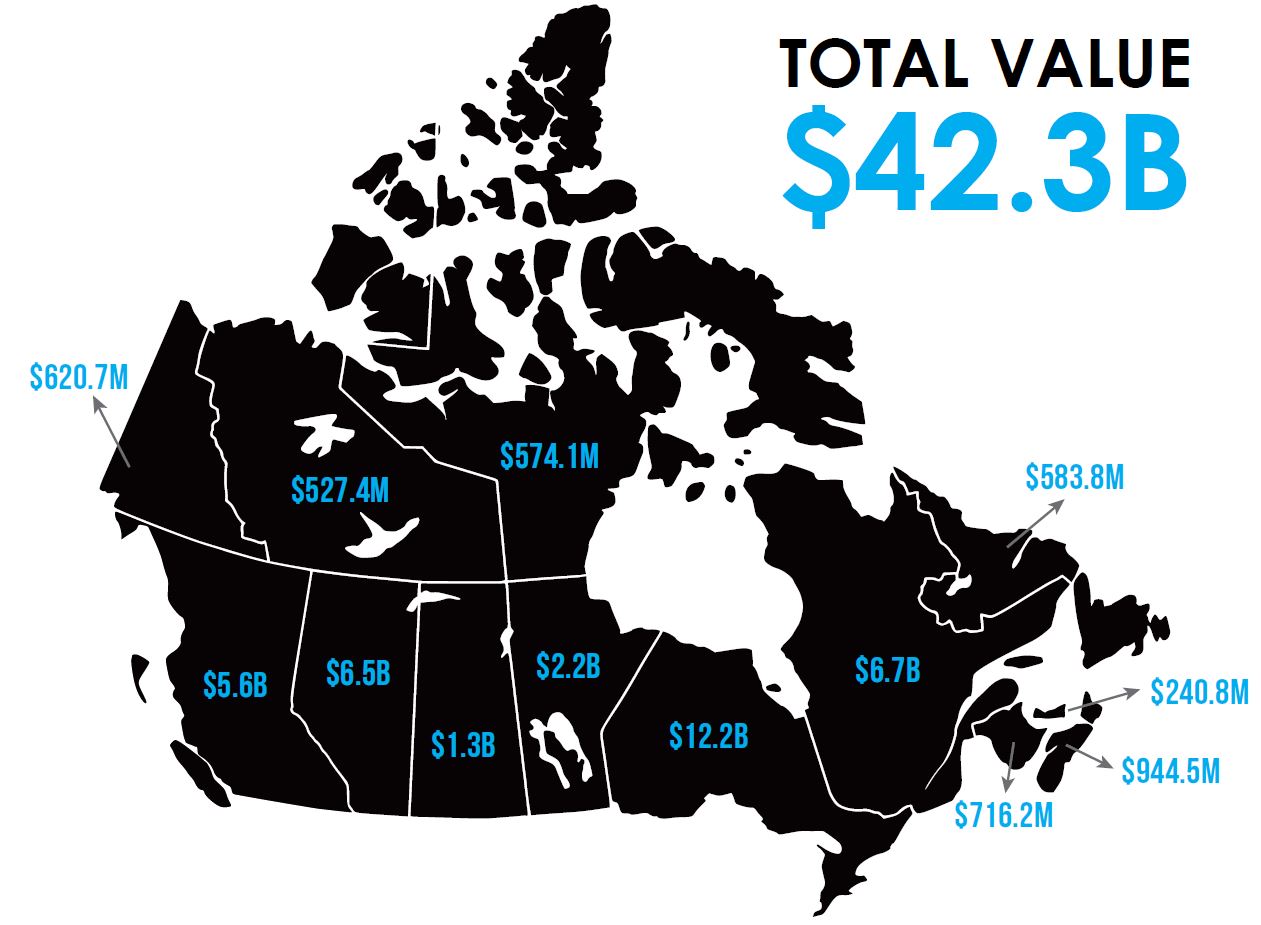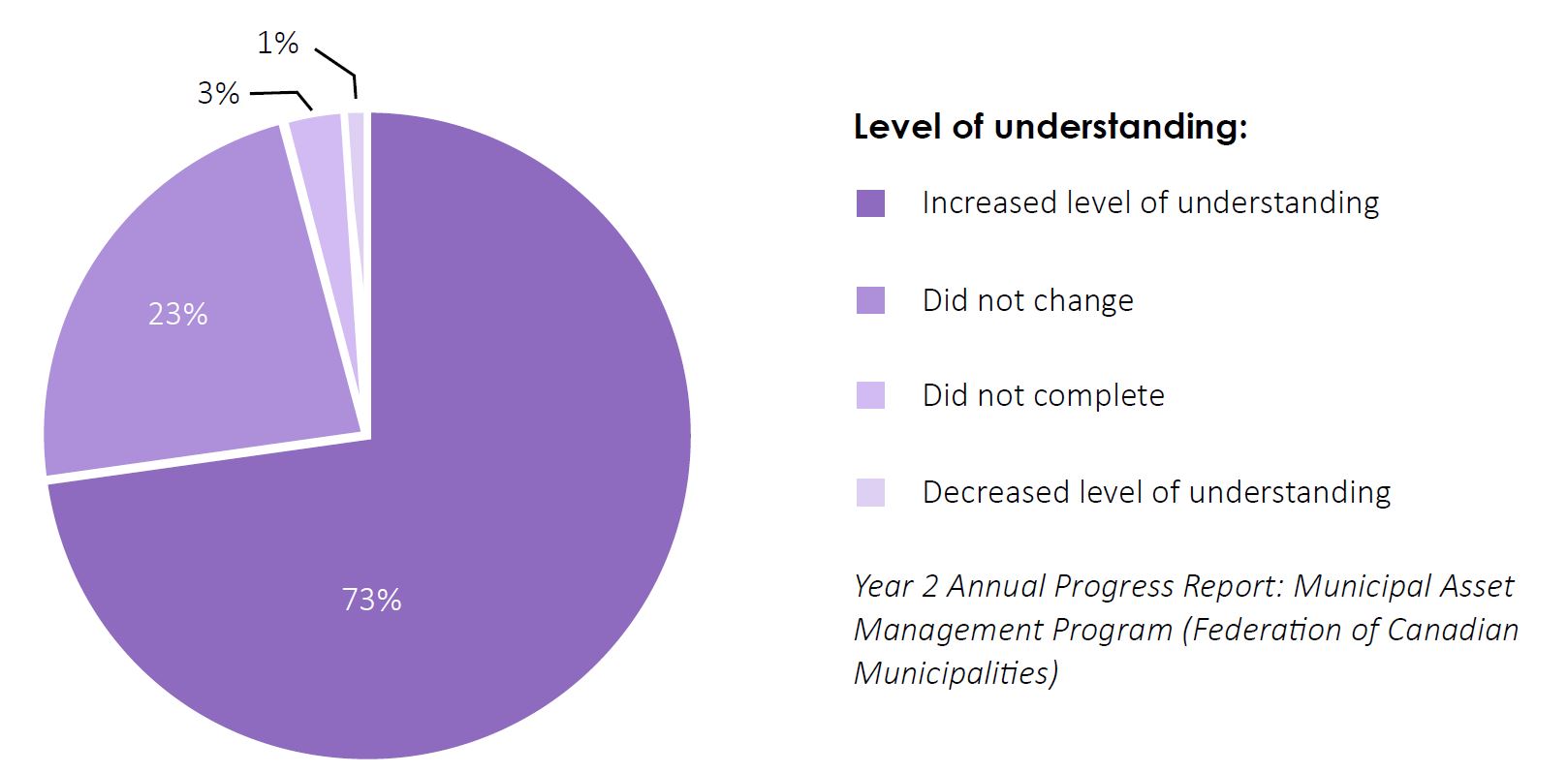Building a Better Canada: A Progress Report on the Investing in Canada plan 2016-2019
Building a Better Canada: A Progress Report on the Investing in Canada plan 2016-2019 (Size: 8.19 MB)
Help on accessing alternative formats, such as PDF, PPT and ZIP files, can be obtained in the alternate format help section.
Table of Contents
- MINISTER'S MESSAGE
- REPORTING ON PROGRESS UNDER THE INVESTING IN CANADA PLAN
- WHAT ARE THE PLAN'S GOALS AND WHY ARE THEY A PRIORITY?
- CREATING ECONOMIC OPPORTUNITIES FOR CANADIANS
- BUILDING STRONGER COMMUNITIES
- IMPROVING COMMUTES AND CONNECTING CANADIANS
- BUILDING MORE AFFORDABLE HOUSING AND TACKLING HOMELESSNESS
- CREATING HIGHER QUALITY, ACCESSIBLE, AND AFFORDABLE EARLY LEARNING AND CHILD CARE
- BUILDING COMMUNITIES WHERE CANADIANS CAN LIVE, WORK, AND PLAY
- MANAGING SUSTAINABLE INFRASTRUCTURE
- Progress Made: Improving the Capacity of Cities and Towns to Manage their Infrastructure
- Progress Made: Improving the Reliability of the Food Supply for Canadians Living in Northern Communities
- Progress Made: Providing Cleaner, More Affordable Electricity for Rural and Northern Canadians
- Progress Made: Supporting the Smarter Design of Cities
- Progress Made: Attracting More Private Investment for Public Infrastructure
- ACHIEVING BETTER OUTCOMES FOR INDIGENOUS PEOPLE
- Progress Made: Eliminating Long-Term Drinking Water Advisories on Public Systems On-Reserve
- Progress Made: Investing in More Safe Places to Call Home
- Progress Made: Providing More On-reserve Schools for Indigenous Children
- Progress Made: Providing Better Access to Health Services Close to Home
- Progress Made: Investing in Cleaner, More Affordable Energy
- MEASURING IMPACT OVER THE LONG TERM
- ANNEX A: INVESTING IN CANADA PLAN IMPLEMENTATION STATUS
- ANNEX B: WANT TO LEARN MORE ABOUT THE INVESTING IN CANADA PLAN?
Minister's Message
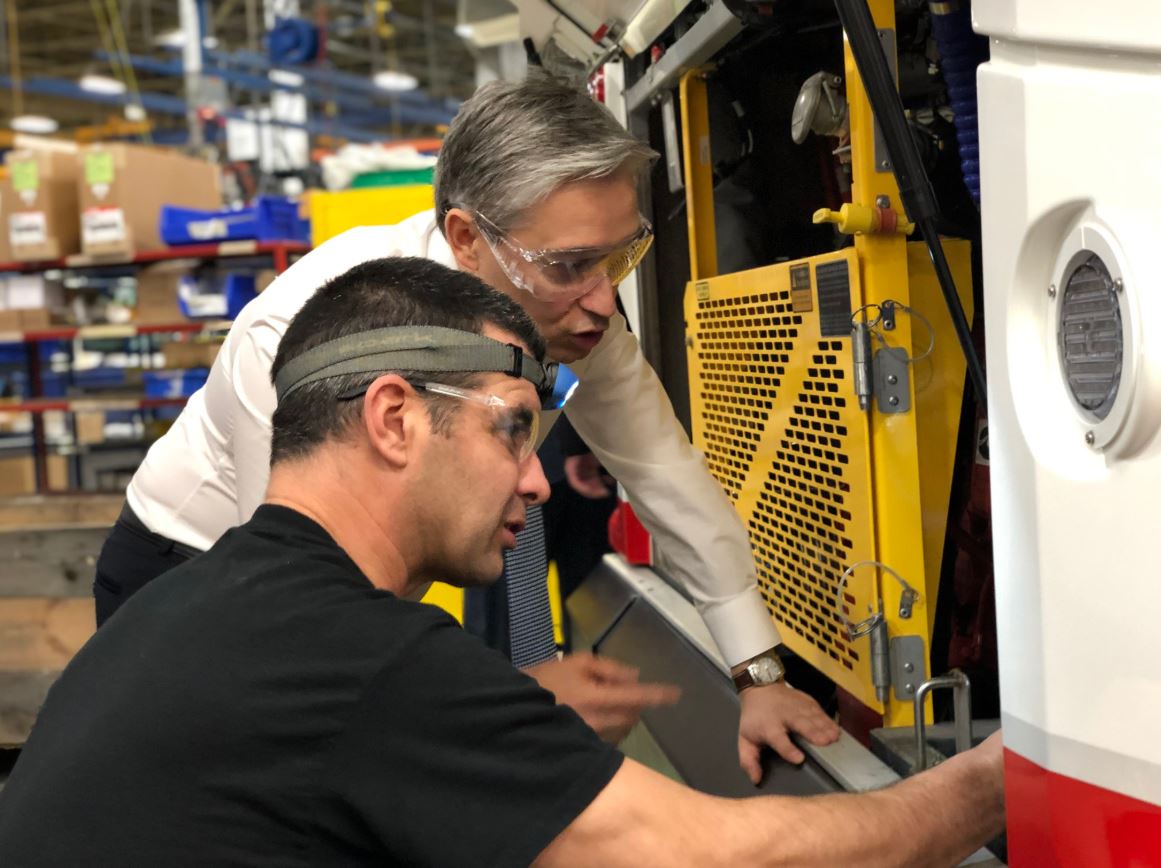
Building a Better Canada: Significant Progress, Concrete Results
In every corner of our nation, the people who call Canada home are building a better country – and a better future for themselves and their children.
Communities are improving the roads and highways as well as the ports and terminals that link our communities — and the world – so that Canadian products reach markets faster. They are upgrading water systems so that Canadians have clean drinking water. They are rolling out new buses and trains, which leads to better commutes and more quality time for Canadians to spend with their families.
They are also building systems that produce cleaner, more affordable electricity. They are upgrading their world-class universities and colleges – home to innovators whose ideas and discoveries are making the world a cleaner, healthier, more connected place.
In my travels across the country, I have seen first-hand how putting infrastructure at the heart of Canada's economic development is improving the everyday lives of Canadians and attracting the talent and investment communities need to create new jobs and business opportunities.
In Kamloops, British Columbia, I saw how BC Transit has equipped their bus fleet with technology that makes taking transit more appealing and convenient. Riders can plan their trips by using their smart phones to track their buses in real-time.
I visited Drumheller, Alberta, where new dykes will be built on the banks of the Red Deer River. A flood mitigation system is being put in place to alert the 8,000 residents when the water levels in the dam are rising.
These are just a couple of examples of the thousands of projects underway across Canada, whose provinces, territories, and municipalities collectively own more than 98 percent of all public infrastructure. Our government believes that partnerships are essential for building communities and improving the quality of life of all Canadians. That is why we have worked closely with provinces, territories, municipalities and Indigenous Peoples to develop our ambitious infrastructure plan. They know best what their priorities are and which infrastructure projects will yield the most significant benefits to residents in their communities.
That is why Budget 2019 includes a one-time top-up of $2.2 billion to the federal Gas Tax Fund, which will help address the short-term infrastructure priorities of municipalities and Indigenous communities. This top-up will accelerate progress and maximize every opportunity to ensure that Canadians continue to see real and timely results.
By working with other orders of government, we are making significant progress and delivering concrete results under the Investing in Canada plan, a more than $180-billion strategy to renew the nation's public infrastructure.
But there's always more work to be done to build a better Canada.
Canadians want continued investments in their communities that create good middle-class jobs, help businesses grow, and make our communities even better places to call home. Through the Investing in Canada plan, we are building a better country that works for everyone.
The Honourable François-Philippe Champagne
Canada's Minister of Infrastructure and Communities
Key Achievements to Date
- More than 48,000 projects approved
- Over 170,000 affordable housing units renovated or built and on track to remove 530,000 households from housing need
- More than 13,000 affordable child care spaces, more than one-third of the targeted 40,000 spaces by 2020
- Supporting approximately 100,000 direct and indirect jobs annually
- More than 900 rural and remote communities have gained access to high-speed internet
- Over 3,600 new buses providing Canadian commuters with more than 100,000 additional seats and more than 4,900 existing buses repaired or refurbished to increase comfort and reliability for transit riders
- 800 municipalities and First Nations are better able to tackle climate change and its effects, and make informed asset management decisions
- 83 long-term drinking water advisories lifted on public systems on reserve
Reporting on Progress Under the Investing in Canada Plan

Throughout the country's history, Canada and Canadians have made major investments in infrastructure to create a stronger, more prosperous nation and build communities that everyone can be proud to call home. Together with provincial, territorial, municipal, and Indigenous partners, the federal government has a leading role to play in this nation-building work. That is why the Government of Canada is making historic investments in infrastructure from coast to coast to coast.
In the short term, infrastructure investments contribute to the creation of well-paying, middle-class jobs. Under the Government's economic plan, Canadians have created over 900,000 new jobs — the vast majority of which have been full-time. Wages are up, the unemployment rate is at its lowest level in more than 40 years, and Canada's economy remains one of the fastest-growing among G7 countries.
In the long term, investments in modern, resilient, and green infrastructure create multiplier effects that ripple across the economy and society for generations to come. They increase exports, boost trade activity, drive innovation, and help regional economies become globally competitive. They encourage Canadians to make environmentally responsible choices and reduce the harmful carbon emissions that lead to climate change. They give all Canadians opportunities to fulfill their potential, participate fully in the life of the nation, and share in its prosperity.
The Investing in Canada plan is the Government of Canada's strategy to build a prosperous and inclusive country through historic infrastructure investments. It is a comprehensive, long-term plan focused on providing predictable and sustainable funding for projects that will build the modern, resilient, and green communities that Canadians want and deserve.
Under the Investing in Canada plan, more than $180 billion is being delivered over 12 years. The Plan includes $92.2 billion for permanent funding such as the federal Gas Tax Fund and for funding committed prior to 2016, and $95.6 billion in new funding for infrastructure programs. The Plan more than doubles previous federal funding levels for infrastructure, provides long-term, stable funding, and is an unprecedented commitment in Canadian history.
Investments under the Plan are being administered by 14 federal departments and agencies, each responsible for delivering programs and funding to address the challenges and opportunities facing communities across the country.
These departments and agencies are:
- Canada Mortgage and Housing Corporation
- Canadian Heritage
- Crown-Indigenous Relations and Northern Affairs Canada
- Employment and Social Development Canada
- Environment and Climate Change Canada
- Health Canada
- Indigenous Services Canada
- Infrastructure Canada
- Innovation, Science and Economic Development Canada
- Natural Resources Canada
- Parks Canada
- Public Health Agency of Canada
- Public Safety Canada
- Transport Canada
Over the 12-year plan, Infrastructure Canada is directly responsible for over $113 billion in federal funding that will flow to provincial, territorial, and municipal partners through bilateral agreements, targeted funding programs such as the Disaster Mitigation and Adaptation Fund, the federal Gas Tax Fund, and innovative initiatives like the Smart Cities Challenge and the Canada Infrastructure Bank.
Additionally, Infrastructure Canada is responsible for the overall coordination and annual reporting on results for the Plan.
Across all partner departments and agencies, the Investing in Canada plan sets out to achieve measurable progress against seven key outcomes:
- Rate of economic growth is increased in an inclusive and sustainable way
- Environmental quality is improved, GHG emissions are reduced and resilience of communities is increased
- Urban mobility in Canadian communities is improved
- Housing is affordable and in good condition and homelessness is reduced year over year
- Early learning and child care is of high quality, affordable, flexible, and inclusive
- Canadian communities are more inclusive and accessible
- Infrastructure is managed in a more sustainable way
The Government of Canada is committed to ensuring that the outcomes of infrastructure investments are reported in an open and transparent manner. This document is a report to Canadians that details progress to date towards these outcomes, provides key data and indicators to demonstrate real-world impacts and displays concrete examples of investments that are making a difference in communities across the country.
Investments under the Plan are being made in five priority streams:
Also included in the Investing in Canada plan is $92.2 billion in funding that is available through existing programs.
Projects Approved Across Canada
Over 48,000 projects approved representing $42.3 billion in federal investments.
The total $42.3 billion in federal investments includes the following:
- $38.6 billion in federal contributions for projects in communities (distribution by province and territory shown on adjacent map);
- $3.5 billion for projects that benefit regions, provinces, or territories across Canada; and
- $174.6 million for projects that benefit Indigenous communities in more than one province in Atlantic Canada (not included on map).
This funding is since the launch of the Plan and includes the federal Gas Tax Fund.
Text description of Figure 1.
Figure 1 is a representation of the map of Canada, which also shows the total value ($42.3 billion) of projects approved in each province and terriftory. The breakdown is as follows: Alberta - $6.5 billion, British Columbia - $5.6 billion, Manitoba - $2.2 billion, New Brunswick - $716.2 million, Newfoundland and Labrador - $583.8 million, Northwest Territories - $527.4 million, Nova Scotia - $944.5 million, Nunavut - $574.1 million, Ontario - $12.2 billion, Prince Edward Island - $240.8 million, Quebec - $6.8 billion, Saskatchewan - $1.3 billion, Yukon - $620.7 million
What Are the Plan's Goals and Why Are They a Priority?

Investing in infrastructure is ultimately about investing in people.
Better public transit means busy parents can get home sooner at the end of a long day. Modern clean water and wastewater systems help keep Canadians healthy and safe. More child-care spaces mean the youngest Canadians will get the best start in life and enable more parents to join the workforce. New community arenas mean more Canadians can play hockey together. Flood mitigation projects help communities cope with the damaging effects of climate change.
"This historic infrastructure agreement provides communities across Canada with the opportunity to drive economic growth, create good jobs and support families and businesses. We will continue to work closely with our federal partners to make strategic investments that will support local priorities and help our communities prosper and innovate."
– Honourable Lloyd Hines
Nova Scotia's Minister of Transportation and Infrastructure Renewal
The Investing in Canada plan targets broad-based gaps in infrastructure that, if not addressed, will create long-term economic, social, and environmental challenges for Canadians. For example, investments are being made under the Plan so that all Canadians have access to high-speed internet, which enables them to participate fully in a global and digital economy. The plan also recognizes the very real challenge of climate change and, through investments in cleaner ways to generate energy and treat wastewater, embraces the opportunity for Canada to be a world leader in fighting pollution.
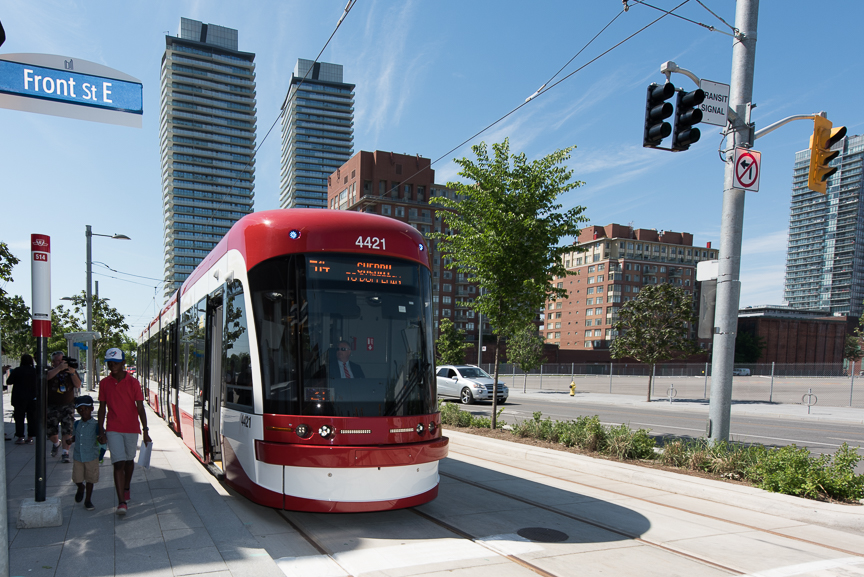
By making it easier to move people and products, well-planned trade and transportation infrastructure can deliver steady, long-term economic growth for generations to come. Meanwhile, federal support for better social infrastructure — such as affordable housing, community and cultural centres, and national historic sites — makes our cities and towns places Canadians can be proud to call home.
The goals of the Investing in Canada plan are, therefore, far-reaching: to achieve steady, long-term growth; improve the resilience of communities, while transitioning to a low-carbon economy; and create an economy and society that works for all Canadians so that they can build a better future for themselves and their children.
"Through the Investing in Canada plan, municipalities have been driving forward on issues such as transit, wastewater and affordable housing upgrades. As we move into the next phase, we will see significant long-term progress that will turn into shorter commutes, more affordable housing and a better quality of life for Canadians. Long-term infrastructure investments combined with municipal expertise means stronger Canadian communities."
– Vicki-May Hamm
President of the Federation of Canadian Municipalities
Creating Economic Opportunities for Canadians

Coordinated and strategic investments in infrastructure have positive long-term impacts, not only on Canada's economy and environment, but also on the well-being of Canadians. These broadly shared benefits include time saved for public transit users and commuters; reduced air and water pollution; more safe and affordable places for Canadians to call home; and better water quality for all Canadians, regardless of where they live.
Public infrastructure is also a valuable resource for businesses. Modern, efficient infrastructure helps reduce the costs of production and transportation, which enables communities to attract investment and create jobs for their residents.
For the economy as a whole, investments in public infrastructure enable more goods and services to be produced in an efficient manner, which improves Canada's ability to compete with the rest of the world in a global and digital economy.
Progress Made: Creating Jobs for Canadians
The Department of Finance Canada estimates that the incremental increase in infrastructure spending associated with the Investing in Canada plan to date will raise the level of real gross domestic product (GDP) by 0.4 percent by 2020–21.Footnote 1
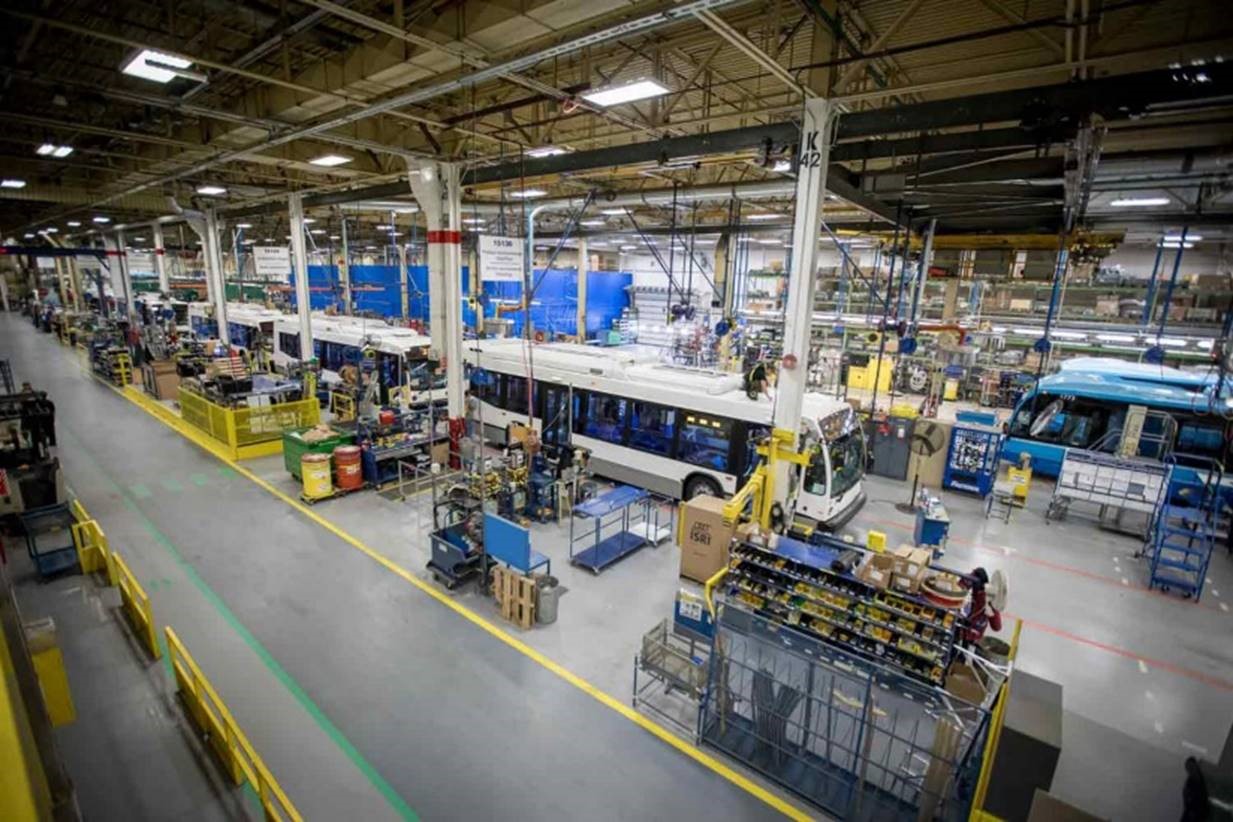
Going forward, total federal investments in public infrastructure – including new funding under the Investing in Canada plan and funding under existing programs – will provide employment opportunities to an average of 100,000 Canadians each year throughout the remainder of the Plan.Footnote 2
Investment in Action: Quebec Bus Maker Creates the Jobs of Today and Tomorrow
To meet the increased orders for new buses from cities and towns across Canada that received federal funding, Quebec bus manufacturer Nova Bus has expanded its operations. Since 2017, Nova Bus has increased its production capacity and created 200 jobs at its two Quebec plants; increased its production schedule from five to seven days; and boosted production from two to three buses a day. Federal funding is also supporting pilot projects in Vancouver and Montreal to test battery-powered electric buses manufactured by Nova Bus, which will prepare Canadians working in the manufacturing sector with the skills they need for the jobs of the future.
Investment in Action: Montreal's Light-rail Network Creates Jobs, Attracts Investment and Drives Innovation
Construction is underway on the Réseau express métropolitain (REM) in Montréal, a project that will connect the region through a 67-kilometre light rail network. The project is expected to create 34,000 direct and indirect jobs in the construction, manufacturing, and technology sectors. Once construction has been completed, the REM is expected to support 1,000 permanent jobs over the initial 30-year operations and maintenance period.
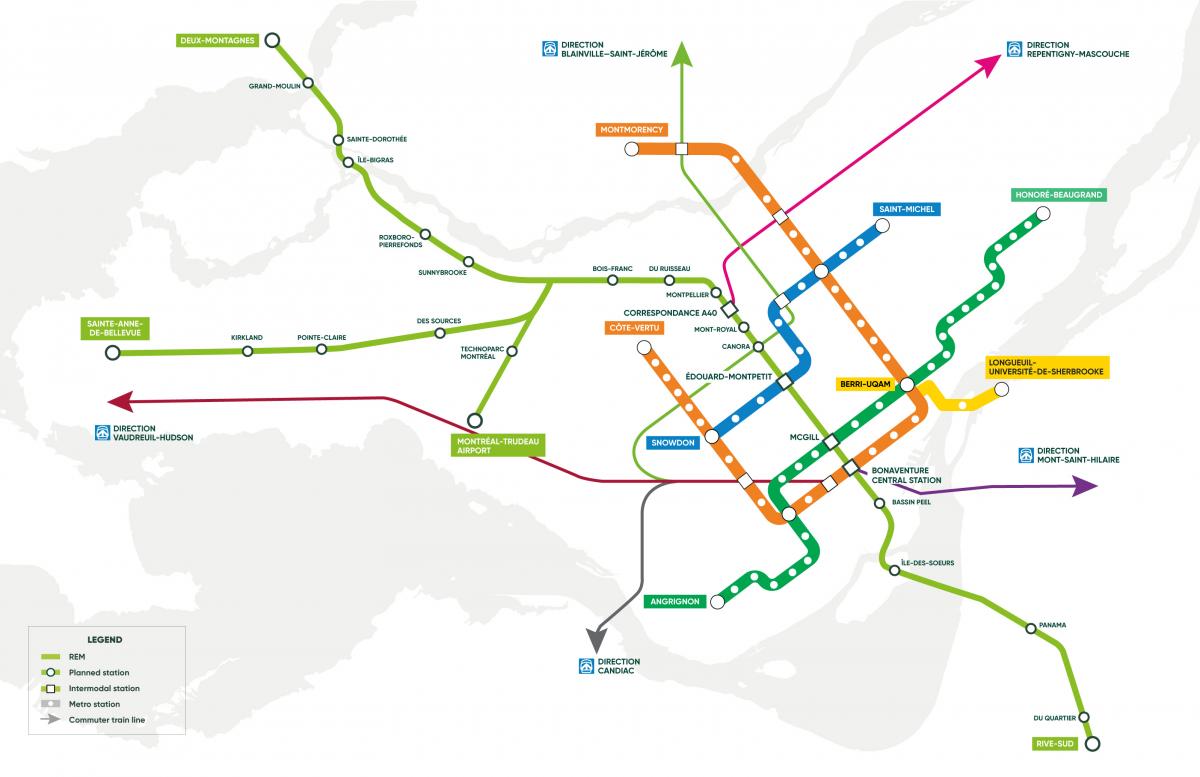
The REM is co-financed with a $1.28-billion senior secured loan from the Canada Infrastructure Bank, an independent Crown corporation that makes investments, alongside private and institutional investors, in revenue-generating infrastructure projects that are in the public interest.
Investment in Action: Samuel De Champlain Bridge Taking Shape
When the Samuel De Champlain Bridge opens to traffic in 2019, it will play in a key role in improving mobility across the greater Montreal area for the millions of local commuters and travellers that use this crossing. The replacement bridge will also be key in ensuring the efficient transport of billions of dollars in international trade each year.
The centrepiece of the project is the architecturally stunning 3.4-kilometre, cable-stayed bridge across the St. Lawrence River, which has been purpose-built for the Montreal climate to last 125 years. The larger corridor project also includes the 470-metre Île-des-Soeurs Bridge, and the reconstruction and widening of the federally-owned portions of Autoroute 15 connecting the bridges to the existing road network.
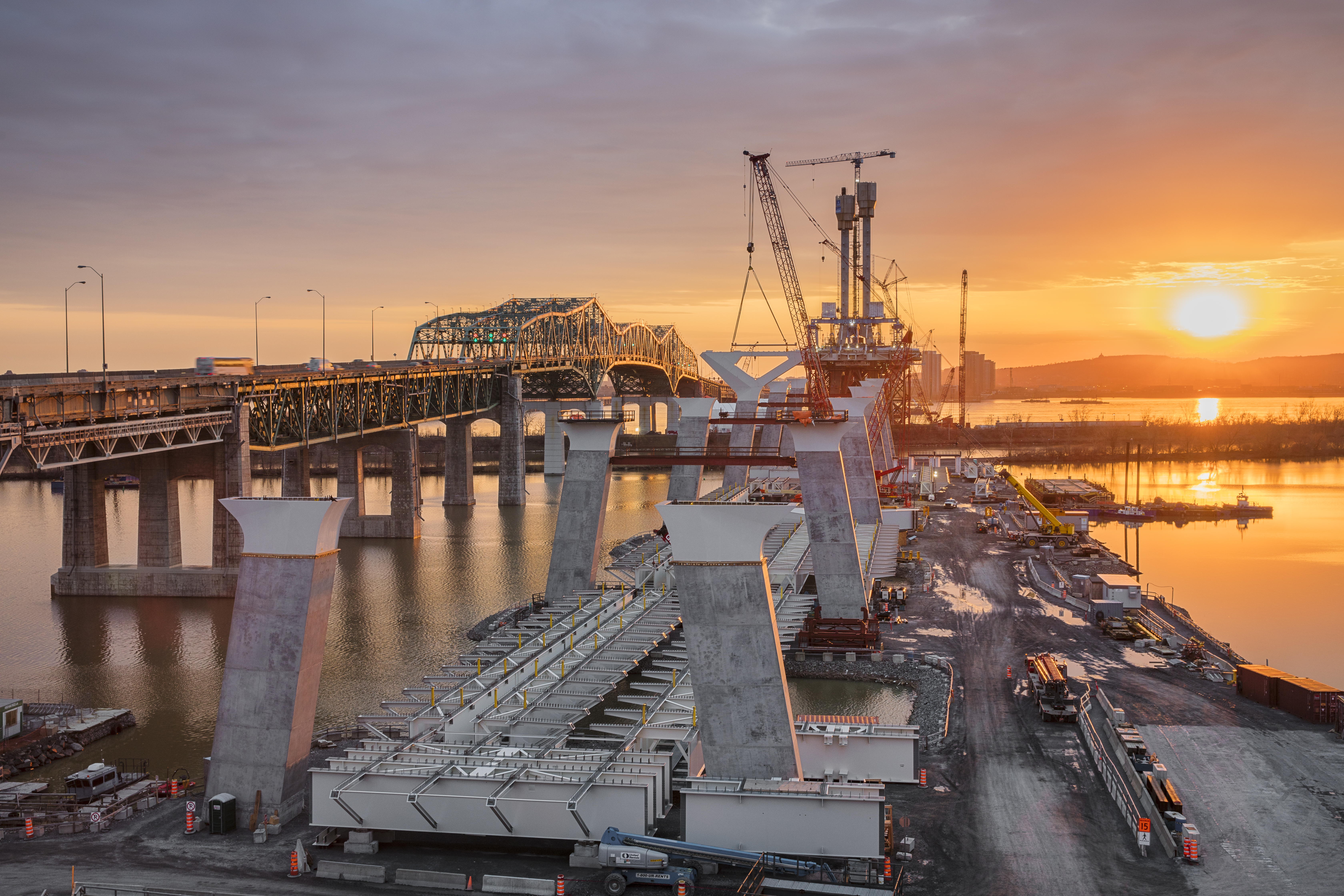
The new corridor will offer improved active transportation and public transit options with the integration of a multi-use path for pedestrians and cyclists and a dedicated central span, which will be part of the Réseau Express Metropolitain (REM).
Construction of the Samuel De Champlain Bridge Corridor began in 2015. As one of the largest infrastructure projects undertaken in North America in recent years, it created well-paid employment for over 1,600 workers in the Montreal region and economic opportunities to companies across Quebec and Canada.
Investment in Action: Progress on the Gordie Howe International Bridge
The Gordie Howe International Bridge project between Windsor, Ontario and Detroit, Michigan will help promote trade and productivity between Canada and the United States.
Windsor-Detroit Bridge Authority is responsible for delivering the bridge project through a public-private partnership with Bridging North America.
Bridging North America expects that the project will create 2,500 direct jobs during the construction phase. The project will contribute to growing the economy now and for future generations, over the 125-year life-span of the bridge.

The new crossing will benefit the lives of the residents and businesses of Windsor-Essex. The direct highway-to-highway connectivity on both sides of the bridge will mean less traffic, noise and pollution. Commercial traffic will be able to get goods to market faster and commuters will be able to cross the border more easily. Tourism and recreation will benefit from better border access for visitors and residents.
The Gordie Howe International Bridge project is also providing targeted community benefits:
- The Workforce Development and Participation Strategy is geared towards engaging businesses and focuses on supporting workforce, training, and pre-apprenticeship and apprenticeship opportunities, including for Indigenous Peoples, women and youth.
- The Neighbourhood Infrastructure Strategy is a $20-million investment that will reflect input from stakeholders and community members and will address regional priorities such as community partnerships, trail connections, aesthetics and landscaping.
Construction started in 2018. Preparatory work is underway on the ports of entry on both sides of the border, and the bridge is expected to open by the end of 2024.
Progress Made: Improving Trade Corridors to Help Businesses and Entrepreneurs Reach New Markets
Canada relies on both internal and international trade for its economic success, which is why federal investments are improving trade corridors so that people and products can move more efficiently. Investments in marine ports, as well as the country's busiest railways and highways, will help Canadian businesses grow into globally competitive successes and create more well-paying jobs for Canadians. These long-term investments also improve the ability of transportation systems to adapt to new technologies and withstand the effects of climate change.
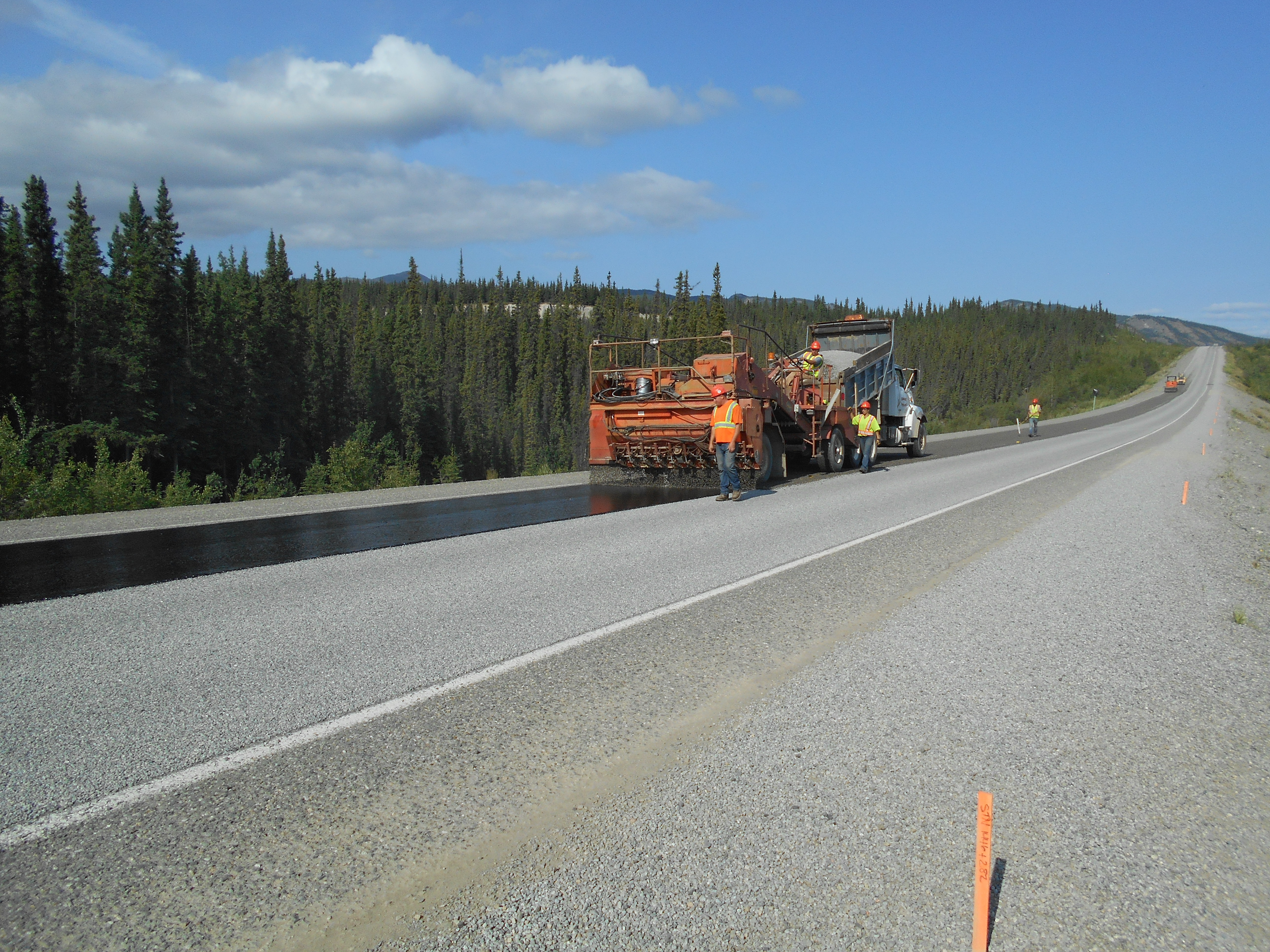
By the Numbers
- 39 projects under the National Trade Corridors Fund have been approved to renew airports, ports, rail yards, transportation facilities, and access roads.
- More than $800 million in federal investments
- More than $1.9 billion in total combined investments
Data provided by Transport Canada
Investment in Action: Safer, More Reliable Travel Through Yukon's Alaska Highway
Tens of thousands of tourists, truck drivers and residents are enjoying safe, reliable travel through Yukon on the Alaska Highway. The federal government provided nearly $21.6 million for eight projects that are now complete, including improvements to paving, passing, and acceleration lanes as well as intersections, drainage, and road foundations. Once considered to be both difficult and dangerous, the Alaska Highway is now a major supply route for industry, a lifeline to communities, and a road to adventure for explorers.

Investment in Action: Restoring lost connections for Newfoundland and Labrador communities
When the MV Sound of Islay ferry in Newfoundland and Labrador's inter-provincial fleet was taken out of service due to deterioration, it removed the only vessel that could operate out of all 24 ports on the island. Fortunately, changes to federal programming to expand categories and provide more flexible criteria to meet diverse regional needs meant that it could be retrofitted and returned to service. The necessary repairs were completed, thanks in part to nearly $2 million in federal funding. The repairs also improved accessibility and reliability to allow the ferry to better meet increased service demands during peak commercial and tourism seasons, generate more traffic for local businesses, and promote economic growth throughout the region.
Budget 2019 Measures
Budget 2019 announced an additional $400 million for the National Trade Corridors Fund delivered by Transport Canada for projects in the Arctic and northern regions. These funds will be delivered over 8 years, providing dedicated funding that will help build new roads and other vital connections to and between Arctic and northern communities.
Progress Made: Investing in the Future of Transportation
Investments in transportation systems keep Canadians safe and enable them to compete with the world in a global and digital economy. An efficient and modern transportation system also improves the quality of life of Canadians by making it faster and more convenient for them to get to where they need to go. As modes of transportation evolve, the Government of Canada is updating regulations, certifications, and standards to address emerging technologies, such as self-driving cars and drones.
In addition, the new Transportation Data and Information Hub provides high-quality, timely, and accessible information on Canada's transportation system. The Hub is improving public understanding of the transportation sector's role in Canada's economy and society.
By the Numbers
- Preparing for connected and automated vehicles: the Program to Advance Connectivity and Automation in the Transportation System is helping Canadian jurisdictions prepare for connected and automated vehicles. Investments include:
- $499,999 to the Canadian Standards Association to develop guidelines and a standardization roadmap for the safe deployment of connected and automated vehicle technologies in Canada
- $144,540 to the Canadian Urban Transit Research & Innovation Consortium to explore the integration of automated and electric transit shuttles in nine communities across Canada
- $365,000 to the City of Toronto to pilot the deployment of an automated transit shuttle on public roads
- $247,275 to the Intelligent Transportation System Society of Canada to update planning tools that help Canadian transportation professionals implement smart roadway infrastructure

Data provided by Transport Canada
Investment in Action: Ontario Residents Benefit From Charging Stations for Electric Cars
Sky Solar Canada Ltd., a solar energy producer based in Markham, Ontario, has received $2 million in federal funding to develop Canada's innovative electric vehicle infrastructure to make it easier and more convenient for Canadians to drive the cars of the future. The funding will support 12 solar-powered EV-charging stations at five sites across Ontario, including three in Cobourg, one in Markham, and one in Oxford Station. Many of the charging stations are bi-directional, which means they will transfer power from the battery to the electricity grid to help address the energy needs of businesses and homeowners.
Progress Made: Attracting Talent and Investment to Build a Nation of Innovators
Many of the buildings on the campuses of Canada's universities, colleges, and polytechnic schools are more than 25 years old and nearing the end of their useful lives. Federal funding under the $2-billion Post-Secondary Institutions Strategic Investment Fund has supported the renewal of research labs and training facilities on campuses across the country.
As a result of these investments, students, professors, and researchers are working in state-of-the-art facilities to advance research and innovation in Canada. They are collaborating in specially designed spaces and working in close proximity with partners to turn discoveries into world-leading research and new breakthrough ideas. In the process, they are training for — and creating — the high-value jobs of today and the future.
By the Numbers
- Funded hundreds of infrastructure projects at post-secondary institutions across the country:
- 162 research and innovation projects
- 119 training projects
- 168 environmental projects
- Accommodated an additional 3,600 staff and 41,017 students at post-secondary institutions as a result of these investments
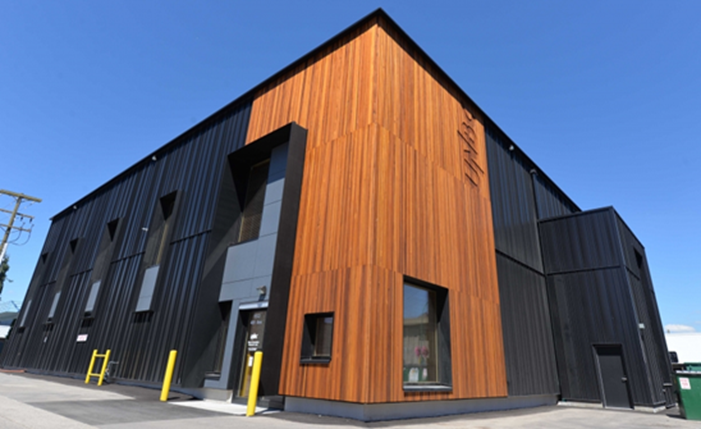
Data provided by Innovation, Science and Economic Development Canada
Investment in Action: New B.C. lab for wood innovation turns ideas into solutions
Students, researchers, entrepreneurs, and business leaders are benefitting from a $1.9-million federal investment in the Wood Innovation Research Laboratory at the University of Northern British Columbia. This state-of-the-art research facility in downtown Prince George provides labs and collaboration spaces for researchers working on sustainable ways to integrate wood into building design and construction to turn their ideas into promising solutions.
Building Stronger Communities
Green infrastructure – such as water treatment systems, renewable energy grids, and energy-efficient buildings – contributes to healthier, more livable communities that are resilient to climate change. All Canadians rely on green infrastructure for clean water and air as well as the production of food.
Progress Made: Strengthening Communities to Protect Canadians Against Climate Change
Resilient infrastructure helps address an important challenge that affects all Canadians: climate change. Floods, wildfires, weather patterns, and storms are getting more intense and frequent. Canada must adapt to this new reality as the effects of climate change impact communities across the country.
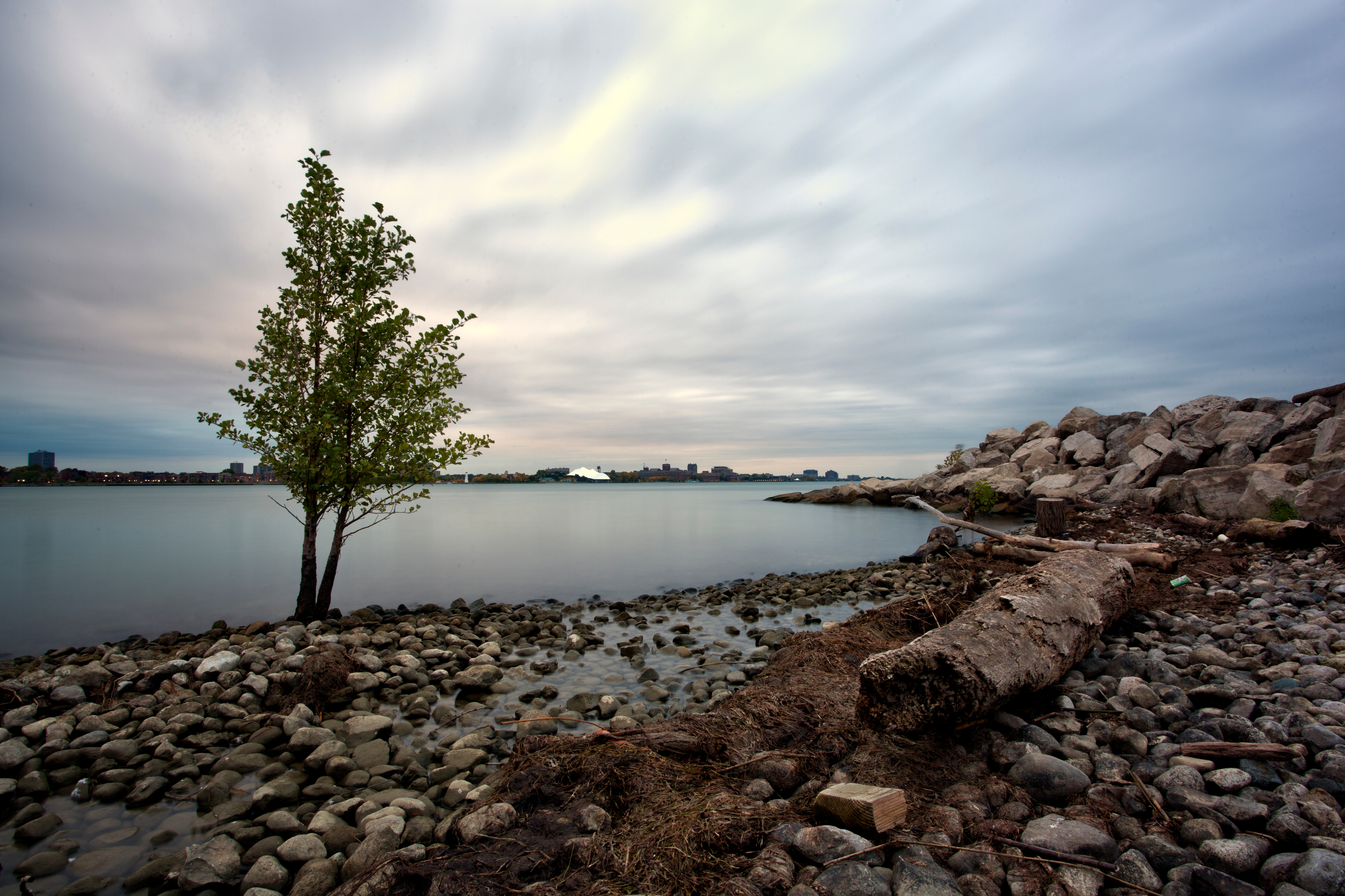
Taking action today to help communities adapt to the intensifying impacts of climate change will result in more climate-resilient communities that protect Canadians. That's why federal investments are supporting the construction of new roads, dykes, and seawalls as well as the enhancement of wetlands and urban forests. These investments help communities withstand damage from extreme weather events and limit the costs of repairing damaged infrastructure. The Government of Canada is also updating building codes to ensure that climate-related risks are taken into account as new infrastructure assets are designed, built, operated, and maintained.
"The City of Windsor has been hard hit by flooding in recent years, and we've been working diligently with residents to implement both short and long-term solutions. Having the Government of Canada come to the table with $32.1 million means we can immediately move forward on 12 major projects. It's a significant investment in our community, and we sincerely thank them for their support."
– Drew Dilkens
Mayor of Windsor, Ontario
Investment in Action: Strengthening Flood Resilience in Edmonton
The number of Edmonton residents who go without essential services during floods will be reduced as a result of nearly $53.8 million in federal funding to build new dry ponds that reduce storm-water overflows on city streets during heavy rainfall. This work will be carried out at two water treatment plants to make them more capable of withstanding extreme weather events. Improvements will also be made to help control heavy water flow into the river during storms. Once completed, this investment will significantly increase the community's resilience to flooding and limit the costs of repairing damaged infrastructure.
By the Numbers
- Mitigating flood damage across Canada
- Over 270 projects to mitigate floods.
- Climate-change adaptation and resilience in Indigenous communities
- 344 projects in Indigenous communities to monitor and adapt to the changing climate.
- Building regional adaptation capacity and expertise
- 2 projects approved, including a project at Memorial University in St. John's, Newfoundland, to train professional engineers on ways to integrate climate-change considerations into decision-making processes.
- Making Canada's buildings and infrastructure more resilient to climate change
- Changes to building codes, specifications, and guidelines include: 4 new standards; updates to 9 existing standards; revisions to 102 performance specifications; 50 proposals for changes to the Canadian Electrical Code; and revisions to the 2019 edition of the Canadian Highway Bridge Design Code.
Data provided by Crown-Indigenous Relations and Northern Affairs Canada, Natural Resources Canada, and Infrastructure Canada
At a Glance: Investing in Climate-resilient Communities
Now more than ever, communities need support to adapt to frequent and intensifying weather events – such as floods, wildfires, and storms – associated with climate change. These events are growing in frequency and pose serious threats to communities. Infrastructure failures from natural hazards can result in threats to the health and safety of Canadians, interruptions to essential services, significant disruptions in economic activity, and high costs for recovery and replacement. It takes time to rebuild a community, and over the long-term, repairing damaged infrastructure can have major economic and social impacts on communities.
That's why the Disaster Mitigation and Adaptation Fund (DMAF) supports large-scale infrastructure projects that limit the potential impact of natural disasters and ensure the continuity of essential services. The fund also supports the restoration of wetlands, wildfire barriers, setbacks and levees, which can help communities affected by climate-related events bounce back faster.
To date, 18 projects have been approved under the DMAF, including:
- Upgrades to 60 kilometres of dykes and five flood water control structures along the western shores of the Bay of Fundy in Nova Scotia will reduce coastal flooding risks and the related damage for over 36,000 residents living in an area of about 70 square kilometres. The completion of these projects will reduce risks to public safety, and minimize disruption to economic activity in one of the most historical and cultural tourist destinations in Atlantic Canada.
- A storm-water management system in Yellowknife, Northwest Territories, to protect the drinking water supply of the 20,000 residents living in the Dene communities of N'dilo and Dettah. This project will replace 8.5 km of underwater pipe and invest in natural barriers, such as dry ponds and wetlands. These upgrades will increase the capacity for flood water to be contained and better protect the community's drinking water supply during extreme weather events.
- A new system in Meadow Lake, Saskatchewan, to increase the community's resilience to flooding and better protect over 5,300 residents. Essential upgrades will be made to Meadow Lake's water and wastewater management systems to protect Backwater Creek, which sits behind the existing wastewater lagoon and is connected to Meadow Lake, the community's clean water source.
- A new shoreline protection and landscaping project in Hamilton, Ontario, to improve resilience and reduce the risks of harbour water flooding into the city and basements of residents who live in the area. The project includes rehabilitating shorelines damaged in recent years by storms and installing new backflow devices throughout Hamilton's sewer system.
Adapting Public Infrastructure to Withstand Extreme Weather
Since 2018, a new assessment called the Climate Lens has been applied to select programs under the Investing in Canada plan. This assessment encourages proponents to design infrastructure that reduces carbon pollution and withstands severe weather, floods, and other potential natural disasters linked to climate change. The Climate Lens is consistent with the objectives of the Pan-Canadian Framework on Clean Growth and Climate Change, which aims to meet the country's targets to reduce emissions, transition to a low-carbon economy, and build resilience to a changing climate. The Lens applies to projects with eligible costs worth more than $10 million. The Lens applies to the Investing in Canada Infrastructure Program, the Disaster Mitigation and Adaptation Fund, and select finalists of the Smart Cities Challenge.
Investing in Stronger, More Resilient Cities and Towns
Federal funding supports cities and towns across the country as they develop the skills, capacity and solutions to respond to climate change. For example, the Municipalities for Climate Innovation Program, administered by the Federation of Canadian Municipalities (FCM), provides training and resources to help Canadian municipalities adapt to the impacts of climate change and reduce greenhouse gas emissions.
A top-up of $125 million in 2016 endowed the FCM with a total of $625 million to administer a revolving fund for grants, loans, and loan guarantees for municipal environmental projects. The Green Municipal Fund supports initiatives that advance innovative solutions to environmental challenges. These projects improve air, water, and land quality; reduce greenhouse gas emissions; and generate economic and social benefits for local communities. As part of this program, municipalities share lessons learned and successful models for advancing sustainability in communities of all sizes.
Progress Made: Investing in Cleaner Water and a Healthier Environment
All Canadians deserve to have clean, safe water to drink. New and improved water infrastructure increases access to clean drinking water, improves capacity to manage wastewater and storm water, and improves the treatment of effluent from wastewater systems.
Solid waste management infrastructure helps safeguard the health of Canadians and protect the lakes, rivers, and natural environments that all Canadians enjoy.
Natural infrastructure investments, such as wetlands and dry ponds, can also make communities more resilient to the impacts of climate change. For example, healthy watersheds purify water and also reduce the risk of flooding during heavy rains.
Investments in waste management systems, including landfills and transfer stations, protect the environment and the health of residents.
By the Numbers
2,898 projects approved to bring more reliable clean water and wastewater management to communities across the country, including:
- 83 long-term drinking water advisories lifted on public systems on First Nations reserves between November 2015 and April 11, 2019.
- 1,500 kilometres of upgrades to potable water pipes.
- More than 280 kilometres of wastewater pipe replaced or expanded to provide more reliable wastewater treatment services, and better protect groundwater and waterways.
- More than 117 kilometres of storm-water pipe replaced and expanded, reducing the risk of raw sewage being released into waterways.
Data provided by Indigenous Services Canada and Infrastructure Canada
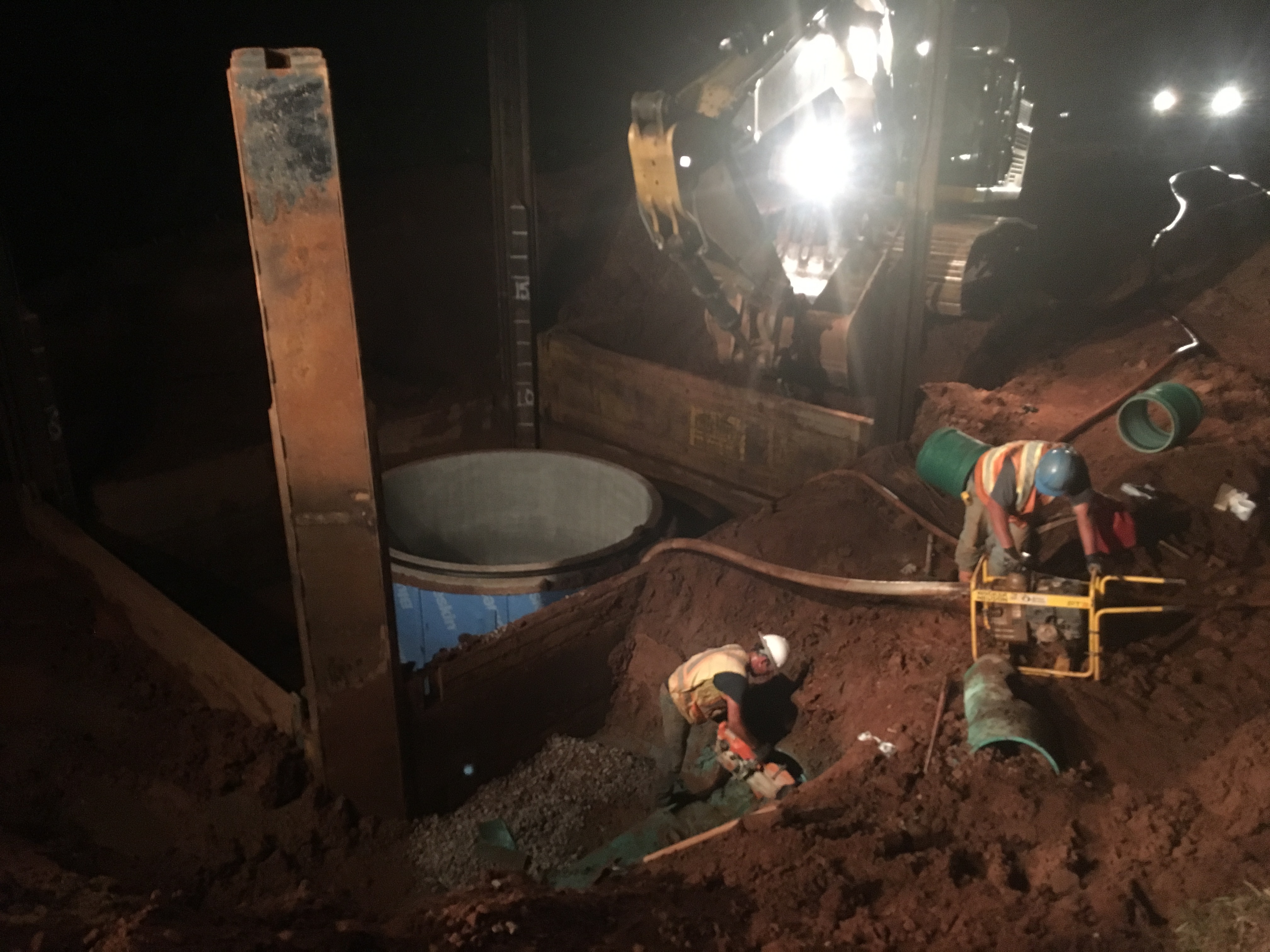
Investment in Action: Cleaner Waterways for Prince Edward Island Residents
Residents of Cornwall, Prince Edward Island, are benefitting from a cleaner, healthier community following over $625,000 in federally funded upgrades to its wastewater system. The improvements, which included the installation of a new sewage pumping station, mean raw sewage is no longer discharged into local waters. As a result, residents can harvest shellfish and enjoy trout fishing without worrying about polluted water. In addition, the construction of a new backup power supply for the lift station and ultraviolet treatment building means wastewater will continue to be treated during power outages.
By the Numbers
- 642 projects to improve solid waste management for 406,000 people in 455 First Nations communities. Of these projects, 362 have been completed
- 253 on-reserve jobs created for solid waste coordinators, operators, and specialists in 122 Indigenous communities. These positions support the ability of First Nations communities to manage waste in ways that make their communities cleaner, healthier, and safer
Data provided by Crown-Indigenous Relations and Northern Affairs Canada
Investment in Action: A Cleaner, Healthier Community for Manitoba First Nations
The 1,000 residents of Bloodvein First Nation in Manitoba are benefitting from a cleaner, less polluted community as a result of $564,600 in federal funding to improve waste management and reduce unregulated dumping on the reserve. Investments to construct a new engineered landfill, purchase equipment, and support the position of a landfill operator have ensured that divertible wastes – such as hazardous materials, electronic waste, and recyclable materials – are transported to the appropriate processing facilities.

Progress Made: Investing in the Future of Clean Energy
Investments in clean technology as well as new ways to produce clean, renewable energy prepare Canada for a low-carbon future. These investments also support the Government of Canada's commitment to the Pan-Canadian Framework on Clean Growth and Climate Change, which aims to meet the country's targets to reduce emissions, transition to a low-carbon economy, and build resilience against the effects of climate change. Additionally, the Clean Energy for Rural and Remote Communities program helps communities reduce their dependence on diesel fuel for heat and power, and move to renewable energy sources.
By the Numbers
More zero-emission electric vehicles on the road
- To date, projects are in place to deliver 526 EV fast-chargers and 6 hydrogen stations.
- Demonstration projects have resulted in the installation of 161 next generation electric-vehicle charging stations, such as solar-powered chargers, curbside and lamppost chargers, and systems to manage recharging in multi-unit buildings.
Smart electricity grids
- Projects under the Smart Grids program are being launched, including a federal investment to modernize the electricity grid for Saint John, New Brunswick, which will improve service delivery, reduce pollution and create jobs. The project will develop artificial intelligence to optimize efficiency and cost effectiveness, ensure a more resilient and reliable power system, provide stable, long-term electricity rates to customers, and help to accelerate the switch to clean power.
- 2 technical reports were funded through the Regional Electricity Cooperation and Strategic Infrastructure Program. These reports evaluate those infrastructure projects with the most potential to transition to cleaner ways to generate electricity.
Data provided by Natural Resources Canada
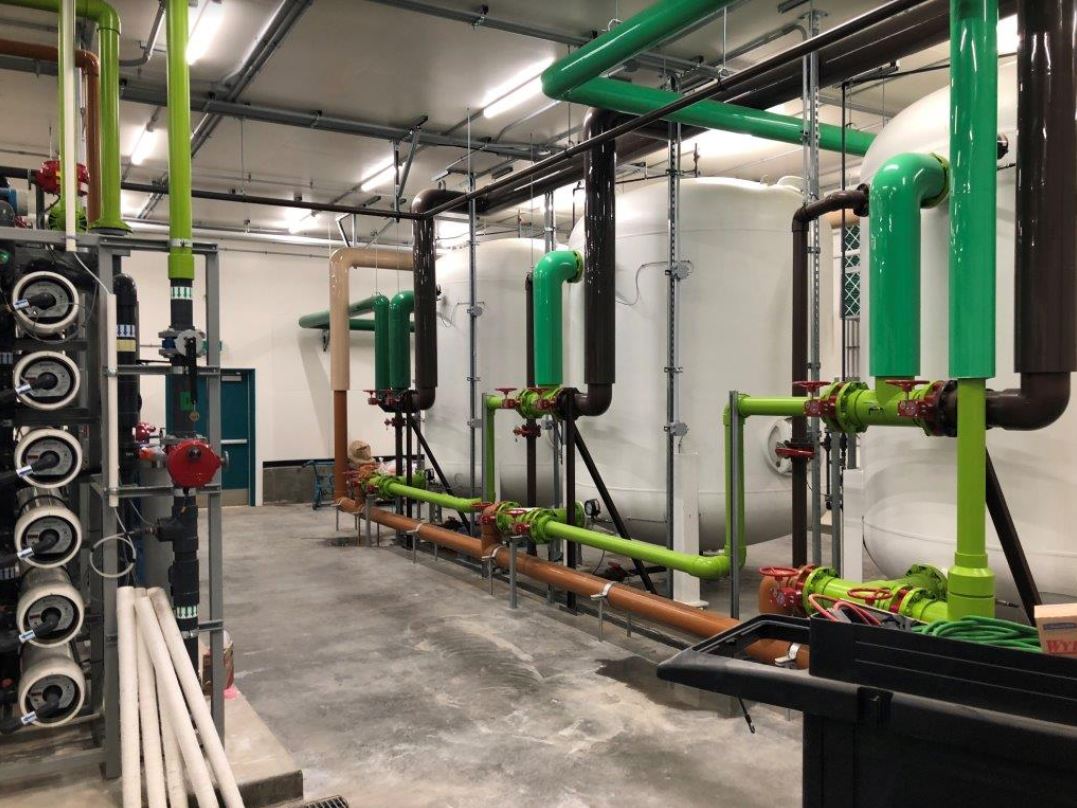
Investment in Action: Cleaner, More Affordable Energy for Saskatchewan Residents
A new geothermal power facility near Estevan, Saskatchewan, will produce enough clean, renewable energy to power approximately 5,000 homes, while taking the equivalent in annual emissions of 7,400 cars out of the atmosphere. The facility is receiving $25.6 million in federal funding, and will use familiar drilling technologies from the oil, gas, and mining industries to take advantage of this dependable energy source. The project will create 100 jobs during construction, provide the provincial power grid with clean, affordable energy, and create new business opportunities for Estevan and surrounding communities.
Budget 2019 Measures
Budget 2019 includes an additional $1 billion to help Canadian homeowners, renters and building operators reduce their electricity bills, while increasing energy efficiency in residential, commercial, and multi-unit buildings. These investments will be delivered by the Federation of Canadian Municipalities through the Green Municipal Fund.
The Budget also includes $130 million over five years to expand the country's network of zero-emission vehicle charging stations. This funding will support the deployment of new recharging and refuelling stations in workplaces, public parking spots, commercial and multi-unit residential buildings, as well as remote locations.
Improving Commutes and Connecting Canadians

Faster, more frequent buses and trains get Canadians where they need to go, whether it's to work, school, appointments, or the grocery store. Investing in modern public transit systems that connect to more bike paths and walking trails also encourages Canadians to opt for active transportation options that reduce pollution. Whether it's taking a bus to school, catching the subway to the grocery store, or cycling to work on a bike path, federal investments in public transit systems across the country are making it faster, more convenient and affordable for Canadians to get to where they need to go.
"Every day, the lives and livelihoods of Toronto residents depend on being able to move around our city quickly, safely and reliably. Maintaining our existing bus fleet and adding more buses on our roads will bring transit into every neighbourhood of our city. There is no area where collaboration and cooperation is more essential than in keeping our residents moving. Together, we will make Toronto's transit system faster, stronger, safer and more accessible to everyone in every part of our city."
– John Tory
Mayor of Toronto, Ontario
Progress Made: Investing in Faster, More Convenient Public Transit for Canadians
Investing in new or improved buses, light-rail transit, and street cars not only helps Canadians get to where they need to go, it also provides a cleaner and more sustainable alternative to driving. Electric, hybrid, and natural-gas buses have even more potential to reduce greenhouse gas emissions, improve air quality, and drive innovation.
By the Numbers
Buses
- More than 3,600 new buses, providing Canadian commuters with more than 100,000 additional seats, including:
- More than 1,100 new buses to replace older and less efficient buses
- 2,509 new buses that will expand service area or bus frequency
- 846 natural gas, hybrid, and battery-electric buses to reduce carbon emissions in big cities
- More than 4,900 existing buses repaired or refurbished, including upgrades to improve comfort and reliability for transit riders
- Nearly 15,000 new or upgraded bus stops and shelters that improve the experience of transit users
Light Rail Transit and Street Cars
- 365 new rail vehicles to increase capacity
- 370 existing streetcars or rail coaches rehabilitated or enhanced
- 192 kilometres of new light-rail tracks
Innovation and Smart Transit Systems
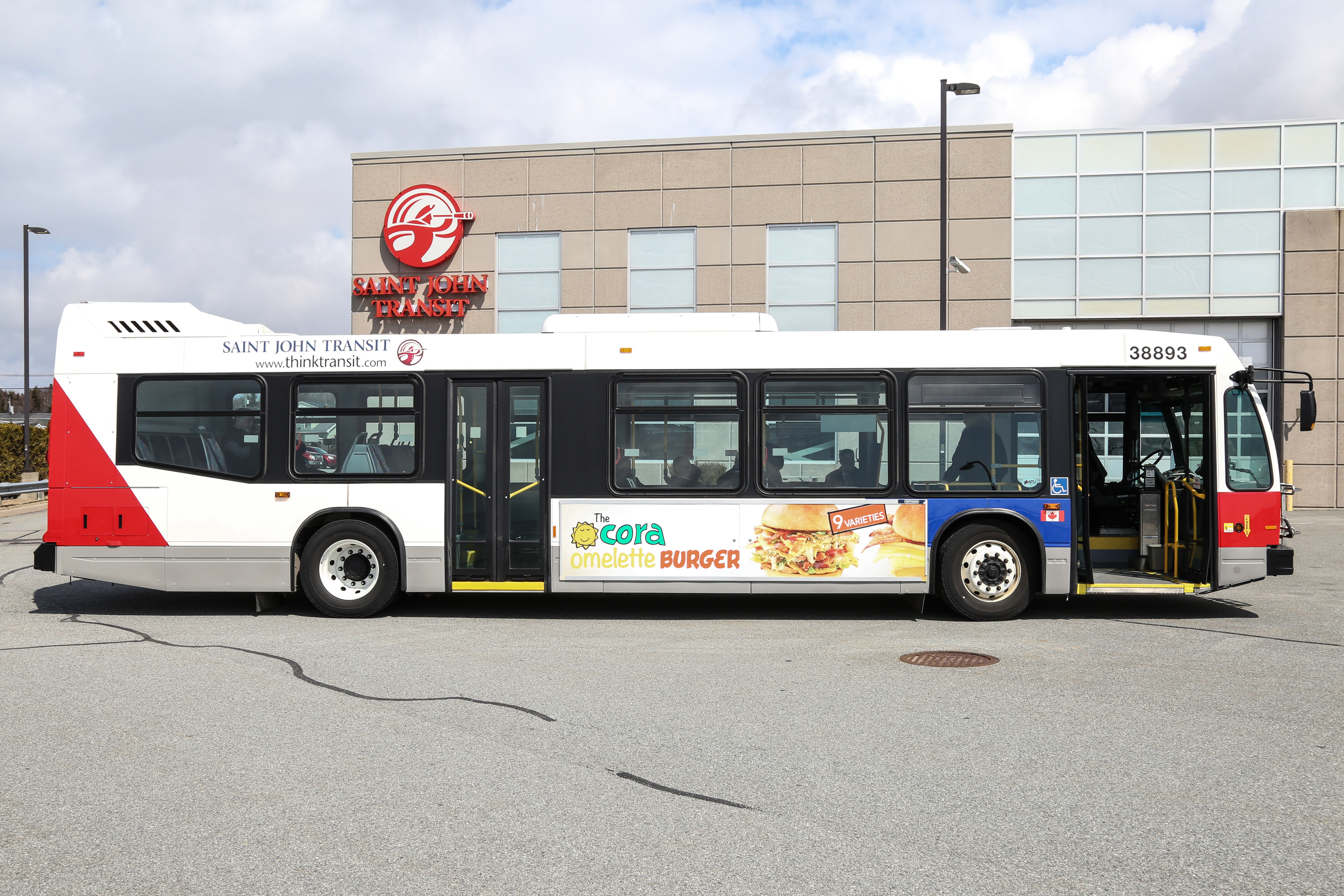
- 1,589 intelligent transportation systems, such as GPS and tracking software, which improves the reliability and efficiency of transit service
- 141 projects that incorporate technology aimed at improving efficiency and service standards, or complying with environmental standards
New and Improved Stations
- 201 new transit stations and 232 existing station upgrades, including to improve accessibility, connections and passenger comfort
Data provided by Infrastructure Canada
Investment in Action: More Accessible Buses Increasing Transit Options in New Brunswick
The delivery of first 12 of the 14 new, more accessible buses ordered by Saint John, New Brunswick and an extension to the harbour trail have helped boost ridership – up four percent to over 151,000 riders in July 2018 alone. The new buses, purchased thanks in part to over $3.6 million in federal funding, are more accessible for passengers with mobility impairments, young children or strollers, allowing them to more easily enjoy the benefits of public transportation. The buses are also more manageable for riders who are hard of hearing or visually impaired thanks to an automated voice announcement system for upcoming stops and a lit display of the street name.
Investment in Action: Cleaner Air, Improved Bus Service for Greater Toronto Transit Riders
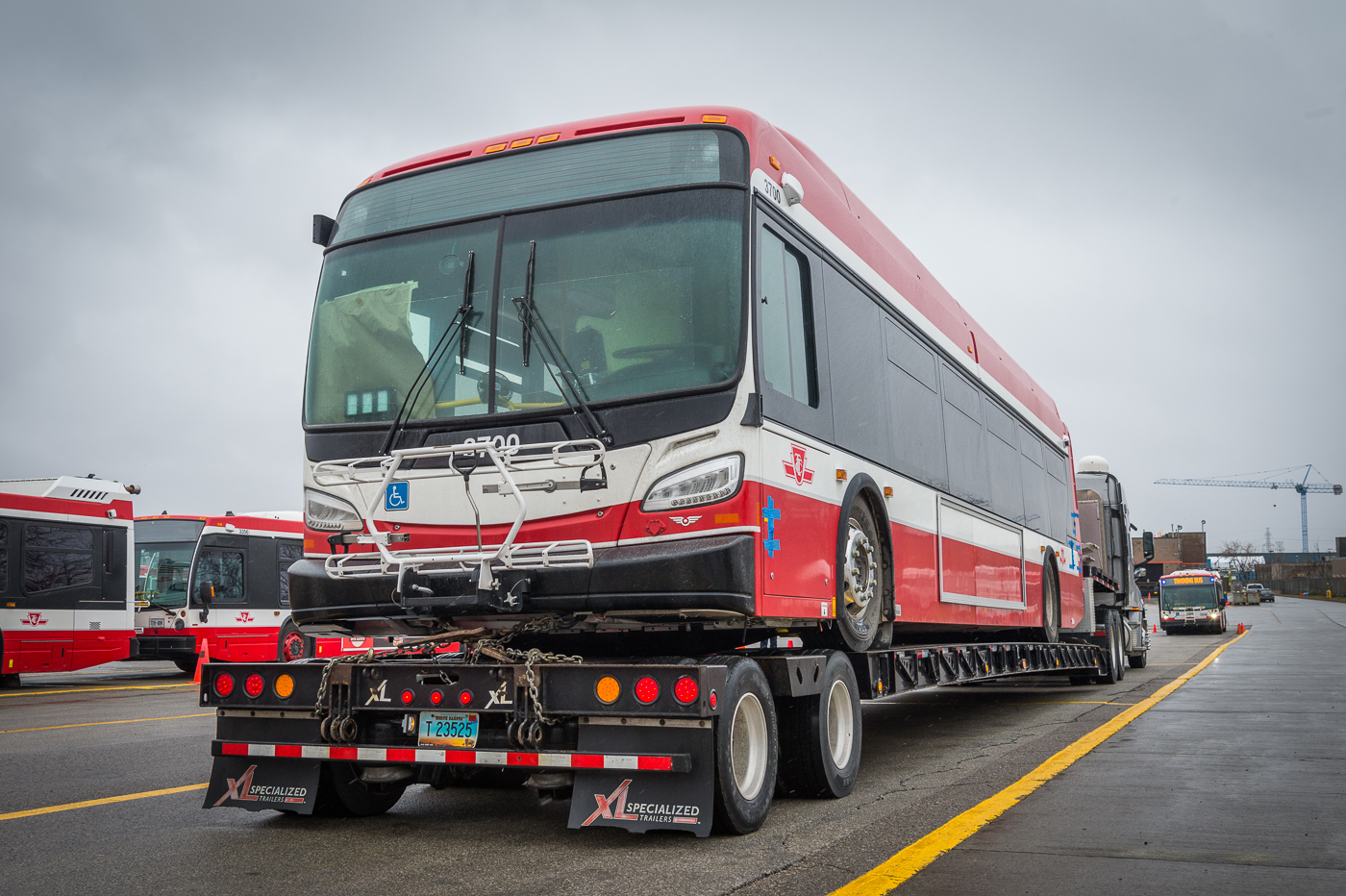
Over $56.6 million in federal funding has contributed to the purchase of sixty battery-powered electric buses, which are providing Toronto-area commuters with a quieter, smoother ride. The new buses will also reduce greenhouse gas emissions by 240 tonnes and cut carbon dioxide emissions by 14,100 tonnes over their 12-year lifespans. The buses, which are manufactured by highly skilled workers in Ontario and Quebec, are being tested as part of a renewal of the Toronto Transit Commission's fleet.
Progress Made: Investing in More Walking Trails and Cycling Paths to Keep Canadians Healthy
Canadians are looking for more options to get around their communities. Increasingly, they are choosing active transportation, such as walking or cycling, instead of using their cars.
By the Numbers
Investments in 110 projects across the country have resulted in the upgrade or construction of more than 132 kilometres of dedicated bike paths and lanes, which keep Canadians active and promote cleaner communities.
Data provided by Infrastructure Canada

Investment in Action: Safer, More Convenient Bike Lanes for Winnipeg Residents
Winnipeg residents are enjoying an expanded network of walking and cycling trails thanks to four completed projects that received nearly $2.5 million in federal funding. The projects include dedicated and protected bike lanes along McDermot and Bannatyne avenues, which are making it safer for residents to bike along some of Winnipeg's busiest roads. By ensuring that the bike paths connect to bus routes, the improvements are providing commuters with more transit options, while encouraging residents to stay active.
Progress Made: Investing in More Accessible Transit Services for Canadians with Mobility Challenges
Canadians with mobility challenges rely on public transit to help them get to work, the grocery store, or appointments.
By the Numbers
Investments in more than 170 projects across the country have resulted in 395 new and 72 rehabilitated paratransit vehicles, providing Canadians who have mobility challenges with safer, more convenient access to public transit.
Data provided by Infrastructure Canada
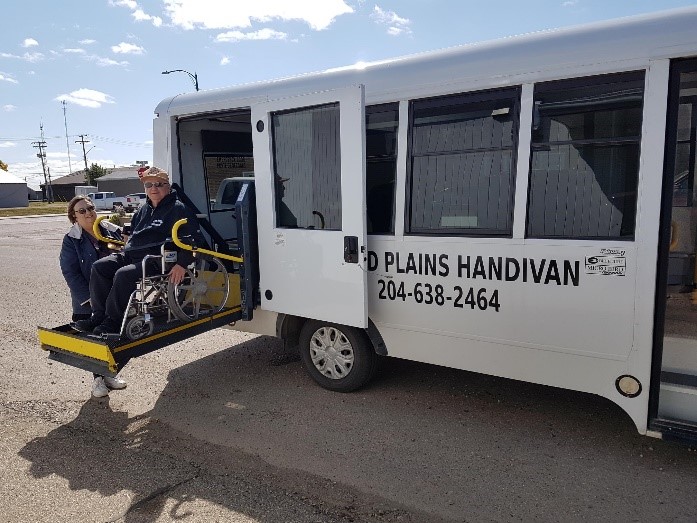
Investment in Action: A Handivan Changes Lives in Rural Manitoba
Residents with mobility challenges in the Manitoba communities of Grandview and Gilbert Plains are enjoying the longer service hours and more comfortable ride provided by a wheelchair accessible handivan, whose purchase was aided with $40,500 in federal funding. With no local taxi service, a growing population of seniors and residents with mobility challenges rely on the handivan for rides to run errands, go to appointments, and enjoy trips to the park. The new service will ensure that all area residents can participate fully in community and social activities.
"This [$2.2-billion federal Gas Tax Fund] top-up will help us build strong cities and spur economic growth by helping cities address infrastructure deficits and plan for future transit and roads."
– Bonnie Crombie
Mayor of Mississauga, Ontario
Building More Affordable Housing and Tackling Homelessness
All Canadians deserve housing that is safe and affordable, which enables them to raise healthy children and pursue opportunities to build better lives for themselves and their families. Investing in the renovation of existing affordable housing units as well as the construction of new ones gives more Canadians a safe place to call home.
Progress Made: Investing in More Affordable Housing for Canadians Most in Need
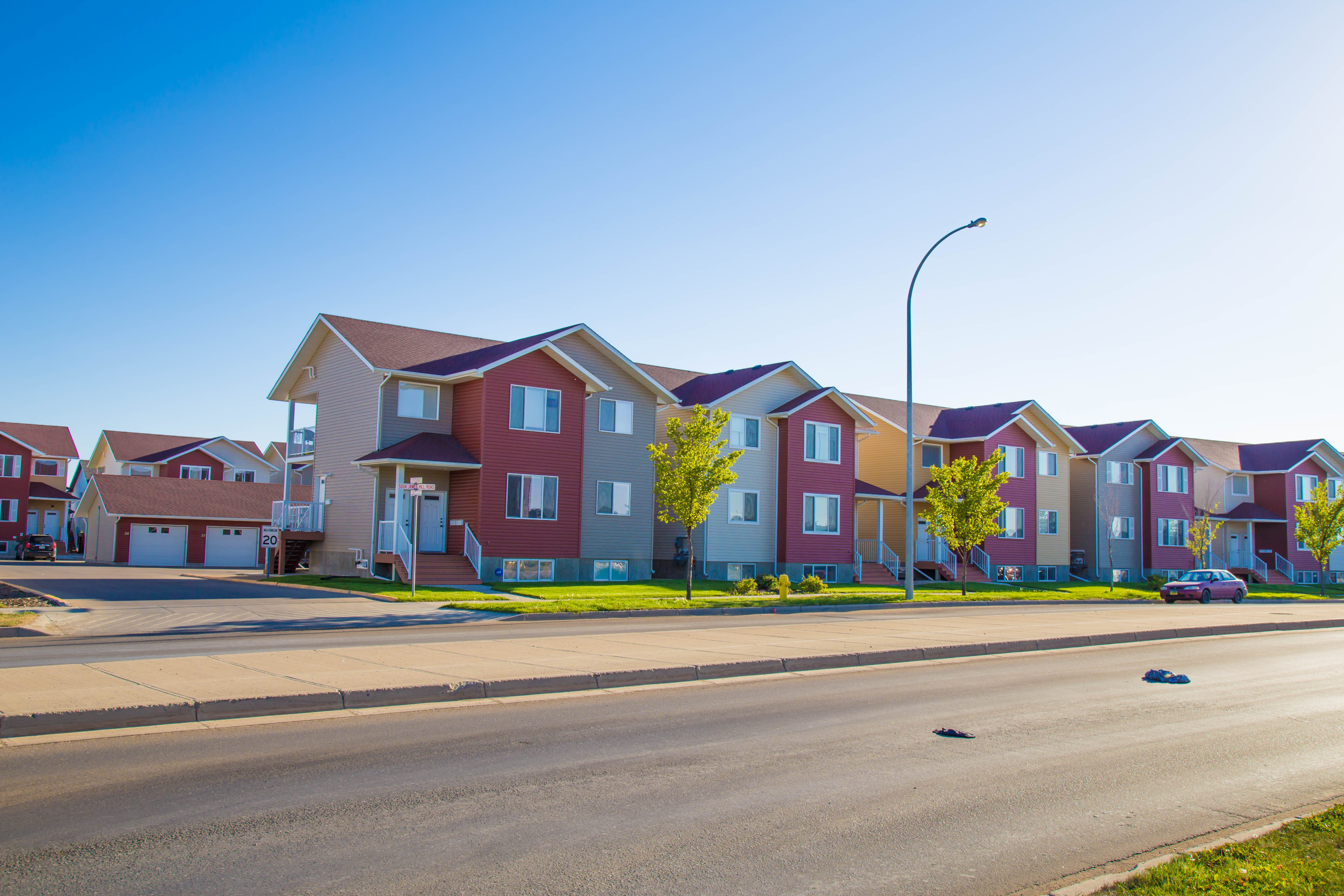
More Canadians now have access to affordable housing that is either new or renovated. More families fleeing violence also have access to shelters.
By the Numbers
- 174,170 affordable housing units have been renovated or built
- 103,552 social housing units in over 575 communities have been renovated or upgraded
- 6,247 affordable-housing units for seniors in at least 200 communities have been built, repaired or retrofitted, providing seniors with more housing options, or allowing them to live in their homes longer
Data provided by Canada Mortgage and Housing Corporation
At a Glance: Investing in Affordable Housing
Through the National Housing Strategy, federal investments are supporting the repair and renewal of 300,000 existing affordable housing units and creation of 100,000 new units by 2027-28.
Investment in Action: Innovative Housing for Whitehorse Residents
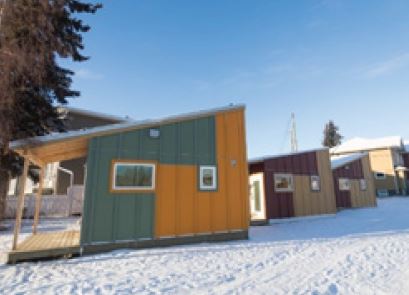
Two hundred thousand dollars in federal funding has supported the construction of four units at the Steve Cardiff Tiny Home Community, which contains single-occupancy suites in downtown Whitehorse for individuals at risk of HIV and homelessness. Each unit contains energy efficient features and provides enough room for one person to live comfortably and in dignity.
Budget 2019 Measures
Budget 2019 includes $300 million for a Housing Supply Challenge that will invite municipalities and other stakeholders to propose new ways to break down the barriers that limit the creation of new housing.
Details of the Housing Supply Challenge will be made available at a later date.
Progress Made: Providing More Canadians with a Safe Place to Call Home
At a Glance: Investing to Reduce Homelessness
The Homelessness Partnering Strategy aims to reduce and prevent homelessness by providing direct support and funding to 61 designated communities across provinces and territories. The funds target community priorities that have been identified through an inclusive community planning process involving officials from all orders of government, community stakeholders, and the private and voluntary sectors.
By the Numbers
- 438 projects supported to prevent and reduce homelessness in Canadian communities
- More than 8,000 people placed into more stable housing
Data provided by Employment and Social Development Canada
Investment in Action: From Shelter to Transformed Lives for Quebec Women
The Centre Mechtilde is a shelter in Gatineau, Quebec, for women and their children fleeing violence or facing homelessness. As a result of over $1 million in federal investments, the centre has completed the construction of 31 transitional housing units, which have more than doubled the capacity of Centre Mechtilde's 14 shelter spaces. The new housing will help women transition from finding basic shelter to rebuilding their lives.
Progress Made: Addressing Urgent Housing Needs On-Reserve and in the North
By the Numbers
- 6,842 affordable housing units on-reserve are being built or renovated and lots being serviced or acquired
- 685 capacity development and innovation projects, benefitting approximately 443,000 people in 568 communities
- 290 housing units or projects in Inuit and northern communities
- 5,873 shelter spaces built or renovated for survivors of family violence, providing more women and children with a safe place to turn
Data provided by Indigenous Services Canada, Crown-Indigenous Relations and Northern Affairs Canada, and Canada Mortgage and Housing Corporation
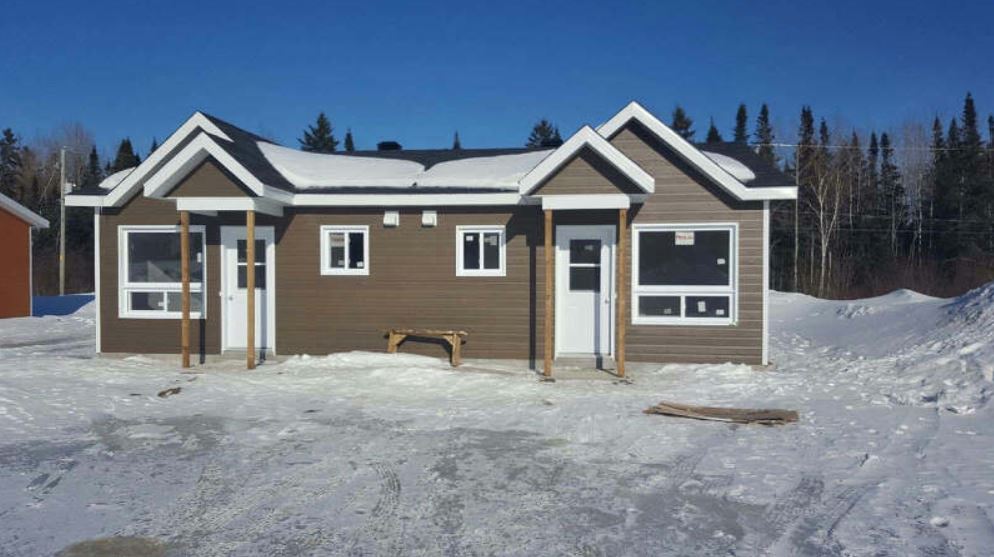
Investment in Action: More Affordable Housing for First Nations in Manitoba and Quebec
More Indigenous people living on-reserve are benefitting from the construction of affordable housing, supported in part with $520,000 in federal funding. In Quebec, the completion of eight semi-detached houses in Lac Simon Anishnabe Nation, southeast of Val-d'Or, is part of a community plan to meet the needs of vulnerable people living alone on the reserve. In northern Manitoba, the Barren Lands First Nation has also completed the renovation of two homes and the construction of three duplexes for a total of six housing units, which improve living conditions on the reserve.
Creating Higher Quality, Accessible, and Affordable Early Learning and Child Care
For Canadian families, high-quality, affordable child care is more than a convenience – it's a necessity. Investing in affordable child care not only helps children get the best start in life, it's also good for the economy. More accessible and less costly child care helps parents who wish to return to work. These investments also help reduce the burden of child-care costs, putting more money in the pockets of middle-class families.

Progress Made: Providing More Child-Care Spaces and Improving Existing Spaces to Give the Youngest Canadians the Best Start in Life
By the Numbers
More than $7.5 billion is being invested in early learning and child care
- This investment is on track to support up to 40,000 more affordable child-care spaces by March 2020, with more than one-third already created.
- Includes $1.7 billion starting in 2018-2019 for Indigenous Early Learning and Child Care so that Indigenous children have the opportunity to experience high-quality and culturally relevant programs and services
- To date, 793 indigenous early learning and child-care sites have been renovated. 549 projects are supporting more than 8,500 child care spaces in 486 First Nations and Inuit communities across Canada
- An additional 244 projects for repairs, renovations, and upgrades to facilities are supporting early intervention and childhood development programs for Indigenous children
Data provided by Employment and Social Development Canada
Investment in Action: A Head Start in Life for Yukon's Indigenous Children
First Nations, Inuit, and Métis children living off-reserve in Yukon are benefitting from an early-learning facility that has benefitted from over $63,000 in federal funding. The facility prepares them for school, while teaching them about Indigenous culture and language. As part of the Aboriginal Head Start in Urban and Northern Communities program, administered by the Teslin Tlingit Council, children have the opportunity to develop a lifelong appreciation of the outdoors by learning to cook in a camp kitchen, ice fish in a shelter, and use snow shoes to walk in the woods.
Building Communities Where Canadians Can Live, Work, and Play
Infrastructure is essential to the delivery of services required to build inclusive communities, which enable all Canadians to participate fully in the country's economy and society. Investments in social infrastructure – such as community centres, recreational facilities, and arts and cultural spaces – are helping to strengthen the middle class, promote inclusive growth for Canadians, and lift more Canadians out of poverty. These investments are benefitting all Canadians – including women, children, seniors, newcomers to Canada, and persons with disabilities – who have access to new opportunities to reach their full potential and share in the country's prosperity.
Progress Made: Building Communities that Work for all Canadians

Making communities more inclusive creates opportunities for all Canadians to find meaningful work and participate fully. That's why the Investing in Canada plan is investing to:
- Make public spaces more accessible to Canadians with mobility challenges;
- Provide more Canadians in need with stable and secure housing;
- Ensure more Canadians benefit from job opportunities in the skilled trades;
- Provide increased and improved access to cultural facilities for Canadians;
- Invest in more community gathering spaces within and outside of schools for official-language minority communities; and
- Support indigenous cultural and educational spaces.
By the Numbers
- Through the Enabling Accessibility Fund, 168 projects funded to make 134 Canadian communities more accessible through investments in pathways and ramps, offices that can be accessed by everyone, and controlled multi-sensory environments that provide spaces for individuals who need to adjust the level of sensory stimulation they receive
- 177 projects in 49 communities that improve public transit accessibility
- Over $5.7 million to support 8 construction and renovation educational projects in official-language minority communities in 2018-2019
- $300 million to support the improvement of physical conditions for arts, heritage, culture and creative spaces
Data provided by Employment and Social Development Canada and Canadian Heritage
Investment in Action: A Cleaner, Safer Day-care Centre for Nunavik Children
Children and staff at the Pirursaivik Child Care Centre, located in the northern Quebec region of Nunavik, have returned to a clean and safe facility following repairs to a leaking sewage tank that had contaminated the building. The leak forced the centre to shut down for more than a month. During that time, staff were not able to work and families were left without adequate child care. With the repairs and clean-up completed, thanks in part to $200,000 in federal funding, the 27 children in the small Inuit village of Akulivik who attend the centre every day are able to learn and play with one another again.
Investment in Action: Municipality of Saint-Nazaire Now Fully Accessible
Quebec's Saint-Nazaire Municipality built a new fully accessible multi-purpose facility equipped with an access ramp, automatic doors, accessible washrooms, and an elevator. People with disabilities can now enjoy barrier-free access to the municipal offices and the community centre, where a variety of programs and services are offered, such as vaccination clinics, daycare services, and fitness classes. The youth centre and the seniors' committee also use the facility for a number of their ongoing activities.
At a Glance: More Job Opportunities in Infrastructure for Under-represented Canadians
The new federal Community Employment Benefits initiative aims to increase the number of job opportunities for diverse workers in infrastructure-related industries. As part of this measure, recipients of federal infrastructure funding are encouraged to identify training and job opportunities for Canadians who have not traditionally benefitted from the jobs created by infrastructure investments. These under-represented groups include apprentices, women, youth, Indigenous peoples, newcomers to Canada, persons with disabilities, and veterans. The initiative also encourages recipients of federal infrastructure funding to identify ways to support small- and medium-sized businesses by purchasing more goods and services from them. The goal is to ensure that the economic and social benefits of public infrastructure investment are broadly shared by all Canadians.
Progress Made: Bringing Canadians Together Through Culture, Sport and a Shared Future
Investments in cultural and recreational facilities not only allow Canadians to stay fit, unwind, and connect with friends and neighbours, they are also places where Canadians can establish the bonds of common understanding and friendship in a country where people come from every corner of the world. The values of openness, diversity, and inclusion that define Canadians are forged in these gathering places, which also support local economies and the tourism sector.
By the Numbers
- 1,626 projects to build and renovate community centres, community spaces, and recreational centres
- 193 communities are benefitting through cultural infrastructure investments in:
- 215 construction and renovation projects to improve arts and heritage facilities, such as museums, theatres, cultural centres, and creative hubs
- 140 purchases of specialized equipment, such as stage lighting, curtains, and multimedia equipment
- 25 feasibility studies to support the construction and renovation of arts and heritage facilities, cultural centres, and creative hubs
- 132 conservation projects at historic forts, lighthouses, sacred spaces, and heritage houses in 80 communities
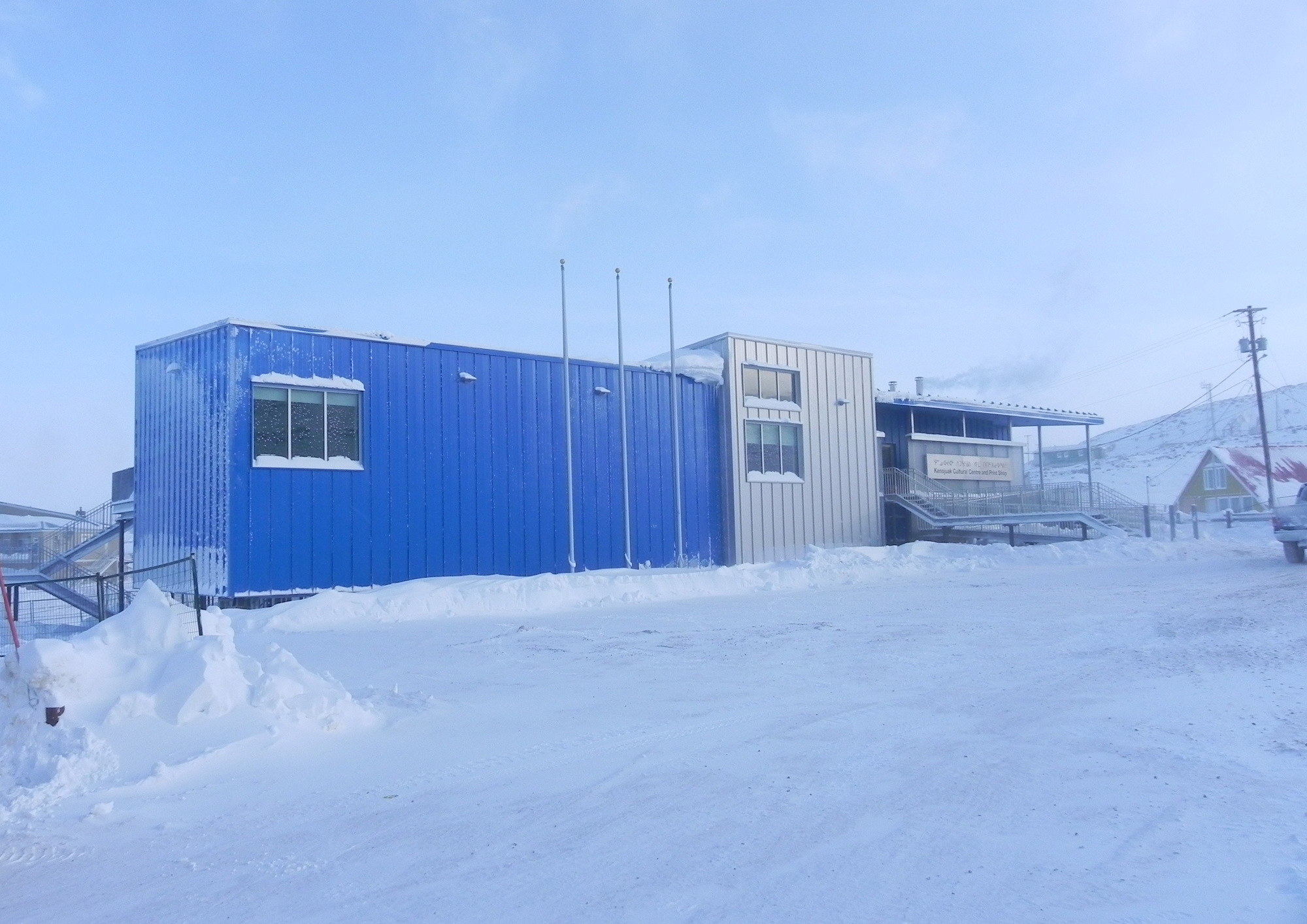
Data provided by Indigenous Services Canada, Infrastructure Canada, Canadian Heritage, Parks Canada, and Regional Development Agencies
Investment in Action: Preserving Ancestral Culture for Future Generations
A remarkable cultural and artistic hub has been created in the heart of Cape Dorset, Nunavut with the help of over $6.5 million in federal funding. The opening of the Kenojuak Cultural Centre means that artists in Cape Dorset now have access to modern equipment and workspaces, and that the living heritage of the Inuit can be preserved within the community and shared with all Canadians. The nearly 930-square metre centre, which includes a modern production facility, will help the community nurture and celebrate Inuit artists.
Progress Made: Extending High-Speed Internet to all Canadians
Fast, reliable internet access is no longer a luxury — it's a necessity for all Canadians. It enables entrepreneurs and businesses to participate in the global and digital economy by opening doors to customers who live just down the street, or on the other side of the world.

High-speed internet also enables students and young people do their homework, stay in touch with friends and family, and apply for their first jobs. It helps busy families register for recreational programs, shop online, pay their bills, and access essential services. For many seniors, the internet is a way to remain up-to-date on current events and stay connected to family and friends who live far away.
The Government of Canada remains steadfast in its commitment to bring high-speed internet service to every part of Canada, particularly to underserved areas in rural, remote, and northern communities.
To date the Connect to Innovate program has approved over 180 projects worth approximately $466 million across more than 900 communities. This means that high-speed internet has been expanded to homes, schools, hospitals, and community centres, which will help generate long-term economic growth and drive social progress.
In addition, under the Rural and Northern Infrastructure Stream an additional $45.2 million has been invested in high-speed internet projects in Prince Edward Island and Quebec.
By the Numbers
- More than 19,500 km of fibre-optic cable is bringing high-speed internet to more than 900 rural and remote communities – three times more than the number of communities initially expected to benefit under the Connect to Innovate program
- Of the communities benefitting, 190 are Indigenous
Data provided by Innovation, Science and Economic Development Canada
At a Glance: Creating More Opportunities for Rural Canadians
Rural Canadians have unique and diverse needs. That is why the Government of Canada is creating an economic development strategy specifically to address their priorities. This strategy will build on existing federal investments that benefit rural Canadians. These investments will ensure that Canadians in rural communities not only have repaired roads, airports, affordable housing, and water systems, they will also have the same access to high-speed internet and wireless services as those who live in cities.
Investment in Action: Faster, More Reliable Internet Access for Inuit in Northern Quebec
High-speed internet access funded by a $62.6-million contribution from the federal government is being extended to residents of all 14 Inuit communities and 28 institutions in Nunavik, a remote territory comprising one-third of northern Quebec. As part of this project, fibre-optic cables are being laid underwater along the eastern coast of Hudson Bay, reaching as far north as Puvirnituq. Once the project is completed, residents of these communities will be able to connect with family and friends, do business online, participate in distance education, and participate fully in society and the digital economy.
Budget 2019 Measures
Budget 2019 includes a coordinated plan to deliver up to $6 billion in new public and private investments to extend high-speed internet to rural and remote communities over the next 10 years. By 2030, the goal is for every Canadian to have access to internet speeds of at least 50/10 Mbps, regardless of where they live. This investment includes:
- Up to $1.7 billion over 13 years, starting in 2019–20, to establish a new Universal Broadband Fund that would extend "backbone" infrastructure to underserved communities and support "last-mile" connections to individual homes and businesses for the most difficult-to-reach communities.
- Securing advanced Low Earth Orbit satellite capacity to provide high-speed internet service to the most rural and remote regions of Canada.
- Up to $11.5 million over five years, starting in 2019–20, for two surveys to measure household access, internet use, and online behaviour by businesses.
Managing Sustainable Infrastructure
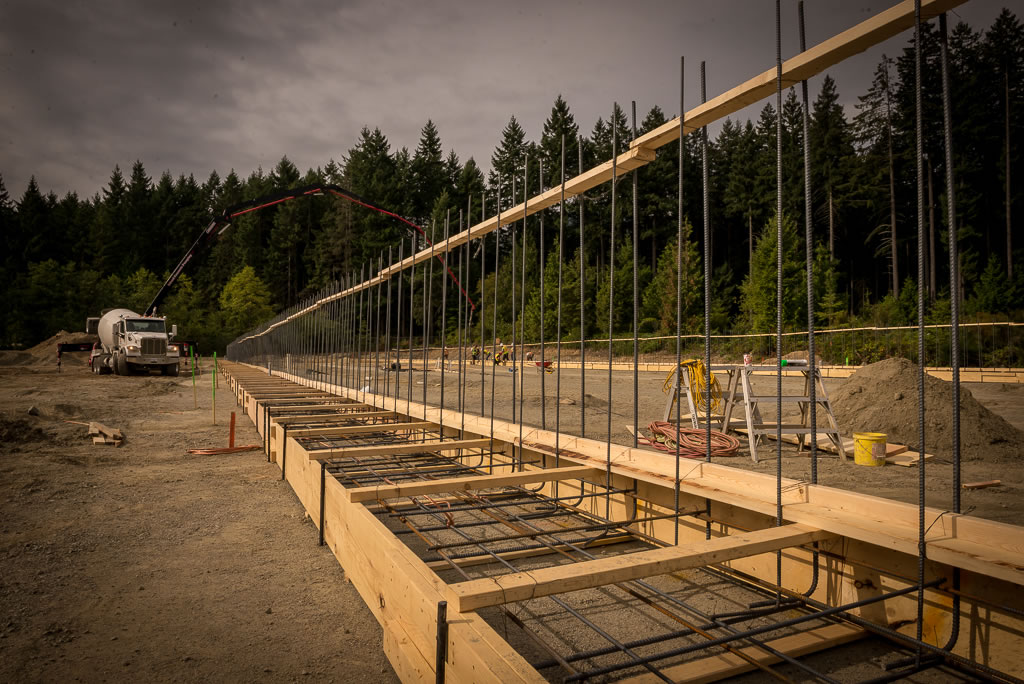
Planning for the future helps municipal governments make smart decisions when investing in new infrastructure as well as repairs and upgrades to existing infrastructure. Small communities, in particular, require extra support to train their staff on ways to use data to inform their planning and spending decisions, as well as manage and maintain their infrastructure assets.
Meanwhile, rural and northern communities have particular infrastructure needs. Their small, often widely dispersed populations and long distances from markets can make infrastructure projects expensive and difficult to manage. The result is often infrastructure gaps that limit opportunity and reduce the quality of life of residents. These limitations include lack of access to high-speed internet service and expensive transportation systems that drive up the costs of food and energy. Rural and northern communities depend on modern, resilient, and green infrastructure to attract the talent and investment they need to keep their economies strong and growing.
Progress Made: Improving the Capacity of Cities and Towns to Manage their Infrastructure
The Municipal Asset Management Program, a federally funded program delivered by the Federation of Canadian Municipalities (FCM), helps Canadian cities and towns make informed decisions about infrastructure investments based on sound asset management practices. This approach requires collecting data on the use and condition of infrastructure assets to manage and maintain them. The collection and use of data are critical for making sound decisions about how to prioritize future spending, avoid costly infrastructure failures, and increase resilience through effective maintenance.
Understanding of asset management increased as a result of awareness-building activities carried out by the FCM in 2016-17
Text description of Figure 2.
Figure 2 is a circle graph showing the change in participants' level of understanding of municipal asset management, after attending an awareness-building event. The breakdown is as follows: Understanding increased for 73% participant, level of understanding did not change for 23%, 3% of participant did not complete the event, and level of understanding decreased for 1% of participants.
Year 2 Annual Progress Report: Municipal Asset Management Program (Federation of Canadian Municipalities)
By the Numbers
- 200 capacity-building projects have provided communities with the skills and tools they need to improve their asset-management practices
Data provided by Infrastructure Canada
Budget 2019 Measures
Budget 2019 commits an additional $60 million over five years to the Municipal Asset Management Program to ensure that communities have the tools they need to manage and maintain their existing infrastructure assets, while planning for new ones.
"As a small municipality, the funding we received for the Asset Management Plan benefits the entire Village of Norton. Having our plan be funded through the Municipal Asset Management Program, we now have access to further resources that will help our rural community be better situated for the future."
– Juliana Booth
Mayor of the Village of Norton, New Brunswick
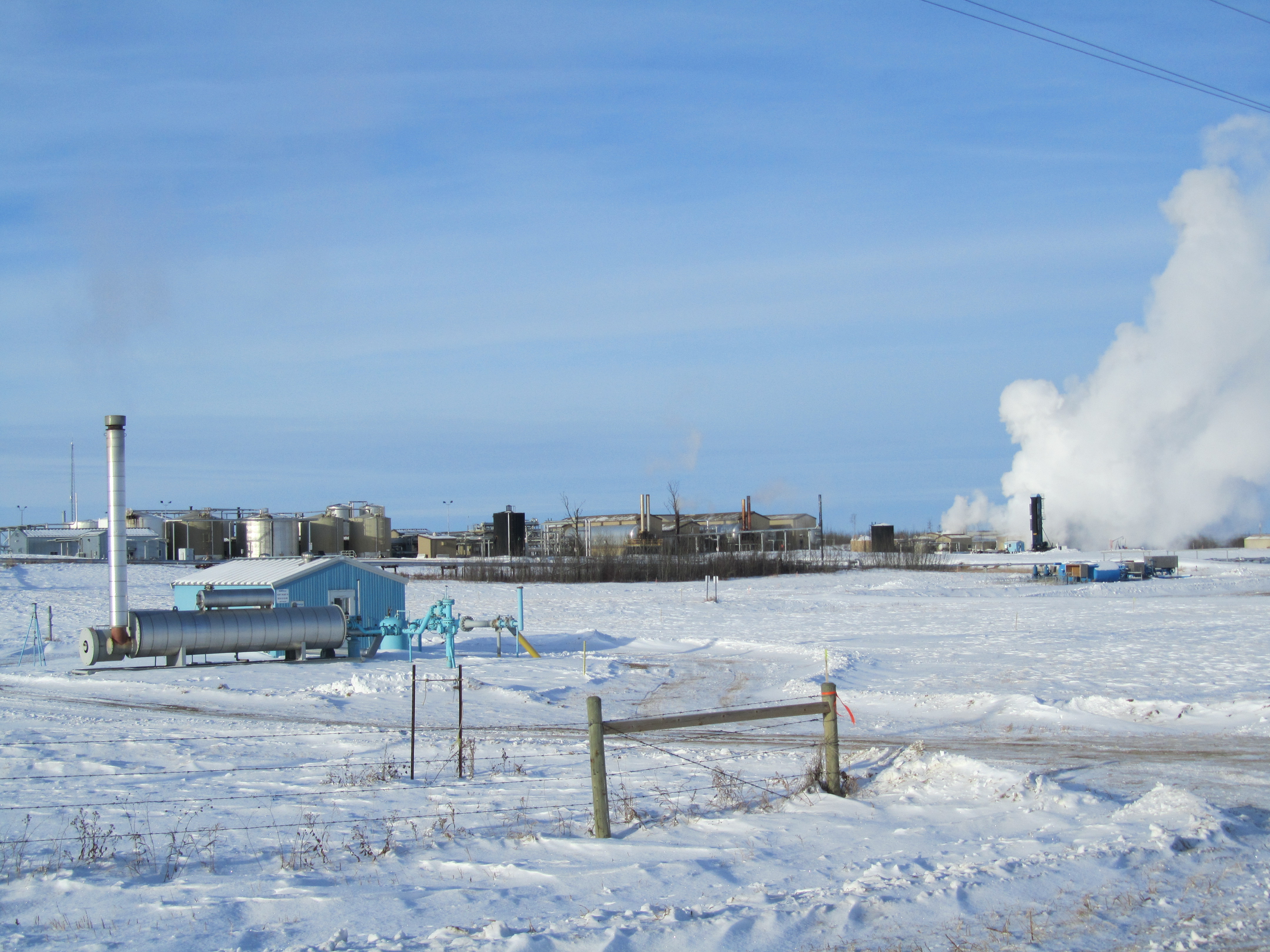
Investment in Action: Managing Infrastructure for Growth in Rural Saskatchewan
A desire to exercise greater control over its future inspired the rural Saskatchewan municipality of Frenchman Butte to train their leaders in asset management practices. The community is home to 1,500 residents, who depend not only on agriculture, but also, increasingly, the oil-and-gas industry for the town's economy to grow. As the community plans for growth, it has benefitted from $34,800 in federal funding for asset management training to develop a sound understanding of the infrastructure assets that the town owns, their condition, and how they are likely to be affected by future development. As a result of this training, the town's reeve, six councillors, and eight staff now meet regularly with representatives of surrounding jurisdictions to ensure that regional transportation networks remain effective. The municipality has also drafted an initial strategic plan to guide its infrastructure management and spending.
Progress Made: Improving the Reliability of the Food Supply for Canadians Living in Northern Communities
In remote communities, particularly in the North, year-round access to fresh food is only possible when supplies are flown in. Investing in infrastructure that improves food security ensures that Canadians living in even the most remote communities have reliable access to nutritious, high-quality food all year round.
Investment in Action: Better Access to Local Food for Northwest Territories Residents
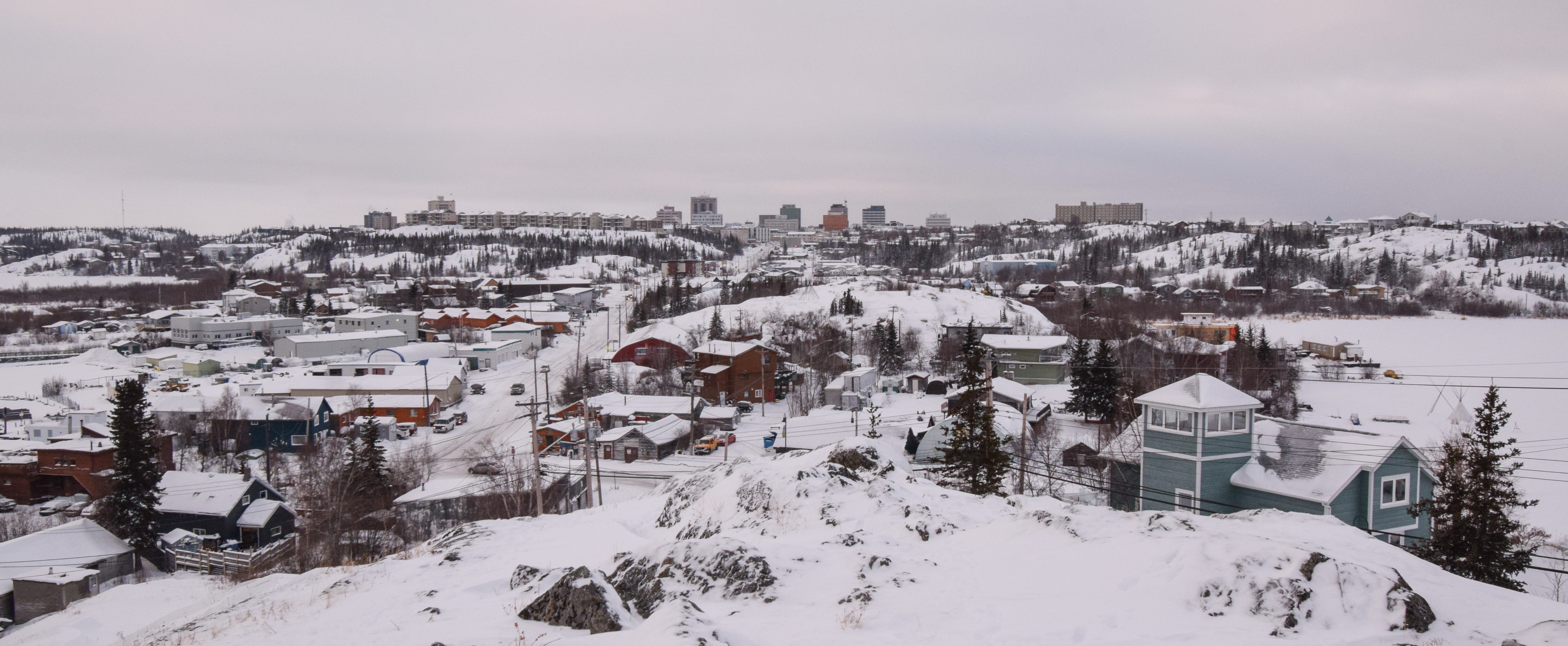
A new fish plant being built in Hay River, Northwest Territories, thanks in part to over $6.6 million in federal funding, is being celebrated as a new start for the diminished fishing industry on Great Slave Lake. The plant, which can process up to 1.4 million kilograms of locally caught fish per year, provides an opportunity for the community to restore its commercial fishery. A thriving industry not only renews the livelihood of fishers and creates jobs for local residents, it also provides a local source of healthy and sustainable protein for communities largely dependent on imported food.
Progress Made: Providing Cleaner, More Affordable Electricity for Rural and Northern Canadians
Providing rural, remote, and northern communities with cleaner, more reliable energy not only reduces greenhouse gas emissions, it also creates new job and business opportunities for these communities. Investments in clean energy reduce pollution result in cleaner, healthier communities for Indigenous peoples as well as Canadians living in rural, remote, and northern communities.
For example, the Arctic Energy Fund helps provide energy security in communities in the three territories by introducing renewable energy, or installing more reliable fossil-fuel based energy systems.
By the Numbers
A new diesel power plant and a wind generation project, together worth $37.5 million, have been approved in Northwest Territories under the Arctic Energy Fund. These projects will provide improved energy efficiency in Sachs Harbour and Inuvik, respectively.
Data provided by Infrastructure Canada

Investment in Action: Cleaner, More Affordable Energy for Inuvik Residents
An innovative wind generation project is underway in Inuvik that will create a cleaner source of energy for residents. The project, which is benefitting in part from $30 million in federal funding, involves the installation of wind turbines and an energy storage system along with the construction of a 5-kilometre access road. The wind generation project will help protect the environment and lower greenhouse gas emissions by reducing the use of diesel fuel. When completed, it will improve the resilience of the community, while serving as a model for other remote or northern communities that don't have access to main power grids.
Progress Made: Supporting the Smarter Design of Cities
The ingenuity of innovators can make communities stronger, healthier, more sustainable, and more inclusive. Communities can serve as test-beds and early adopters of promising new technologies, which can then be scaled up to benefit Canadians living in every part of the country.
The Smart Cities Challenge encourages communities of all sizes to use data and connected technology to achieve meaningful outcomes for residents. The first round of the Challenge, launched in 2017, was open to all municipalities, local, or regional governments, as well as Indigenous communities across Canada. It has since empowered communities to build partnerships across sectors to solve local issues such as mobility, social isolation, food security, youth engagement, and health improvement.
Key Outcomes
- New partnerships forged among municipalities
- Smart cities conversations ignited across Canada
- Open and transparent approach drives innovation
By the Numbers
- 130 applications representing 225 communities
- 25 applications representing Indigenous communities
- 13 provinces and territories represented
- 20 finalists selected
Data provided by Infrastructure Canada

Text description of Figure 3.
After launch (November 23, 2017), the application process began. The application submission deadline was April 24, 2018. The finalists were announced on June, 1 2018. This will be followed by a period to develop final proposals. The final proposal submission deadline is March 5, 2019. This will be followed by a period to select winners. The winners will be announced on May 14, 2019. This will be followed by the implementation phase.

What Communities are saying about the Smart Cities Challenge:
"[Our] Smart Cities project and the concept … it's probably 10 to 15 years ahead of anything done in Canada, and we're proud to bring it here because it can be used throughout the entire country."
– Glen Ross
Executive Director Opaskwayak Cree Nation Health Authority, Opaskwayak Cree Nation, Manitoba
"I think what excited me most about the smart cities project is that it's an opportunity to use some cutting edge technology to help make Richmond more resilient, and this can be something that we can showcase and use some of the lessons learned towards other cities in the province…"
– Jesal Shah
Director, Flood Protection Program, Emergency Management BC
Progress Made: Attracting More Private Investment for Public Infrastructure

The Canada Infrastructure Bank (CIB) is a new Crown corporation that operates at arm's length from government. It works with governments and private investor partners to transform the way infrastructure is planned, funded, and delivered in Canada. The CIB will use federal support to attract private-sector investments to new revenue-generating infrastructure projects that are in the public interest. By leveraging the capital and expertise of the private sector, the Bank helps public dollars go farther, contributes to Canada's long-term economic growth and supports the creation of good, well-paying jobs for the middle class.
The CIB has been operational since December 2017, with an early focus on organizational build-out and stakeholder engagement in order to identify investment opportunities. This has led to well over 100 meetings with public and private stakeholders, an active discussion of dozens of projects, and active engagement on roughly 10 projects at the time of this report's publication.
The Bank's three priority areas for investment are: public transit; trade and transportation corridors; and green infrastructure projects. For example, the CIB is exploring ways to plan and finance projects that improve access within Canada to affordable, reliable, and clean electricity in the most effective way. The Bank is also examining opportunities to attract private-sector investment in high-speed internet infrastructure for unserved and underserved communities.
In addition to its initial start-up activity, the Bank has made its first investment via a $1.28-billion senior secured loan in the Réseau express métropolitain (REM) project in Montréal, a 67-kilometre light rail network that will connect the region through a modern network of 26 stations.
Achieving Better Outcomes for Indigenous People
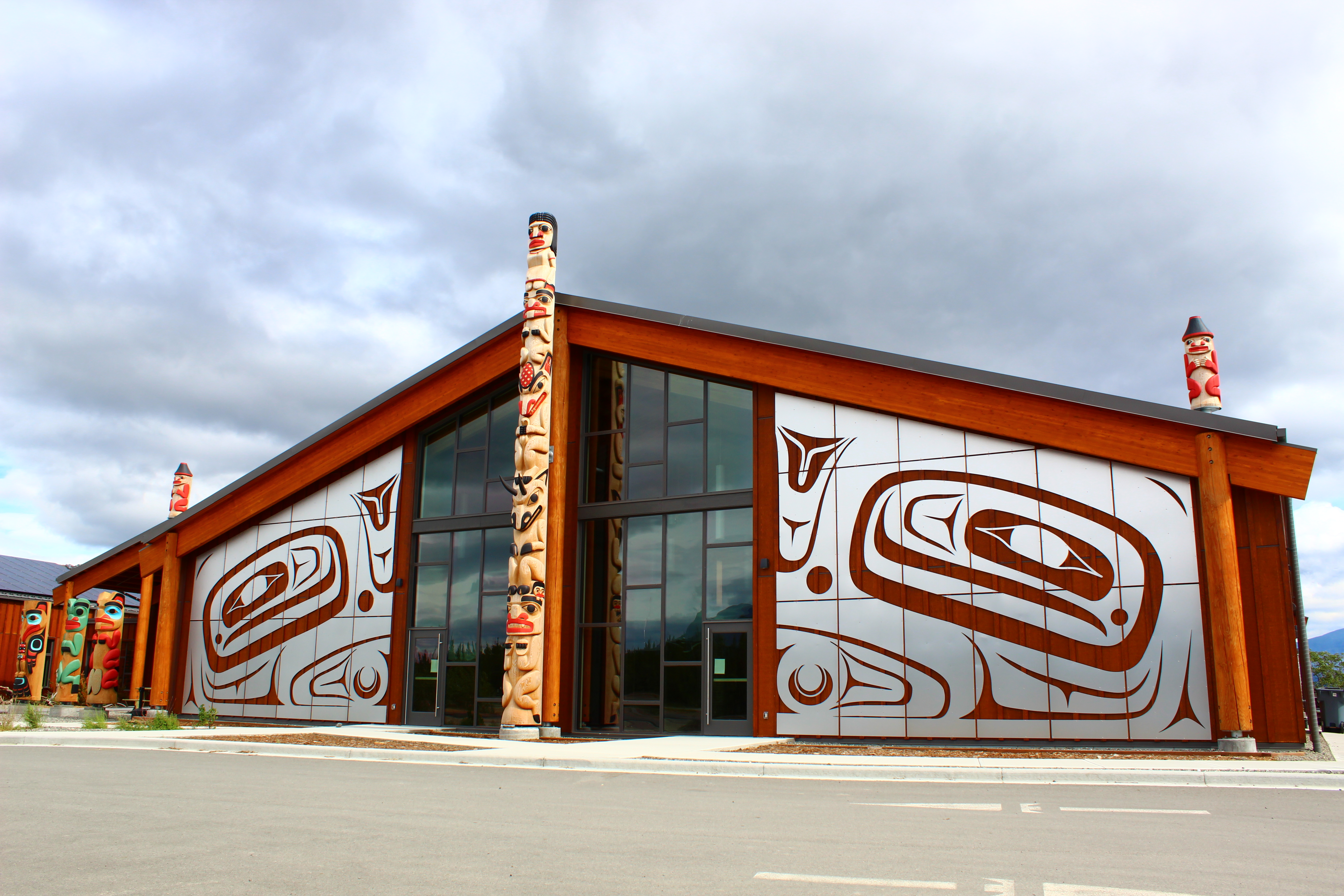
Clean, safe drinking water. Homes that are safe and uncrowded. Communities that support children and families, enabling them to carry on valued languages and traditions. The opportunity to get a good education and a good job, and have a say in how one's community is governed. These are the outcomes that remain out of reach for too many Indigenous Peoples in Canada.
The life expectancy of Indigenous Peoples is up to 10 years shorter than that of the rest of the population.Footnote 3 Infant mortality rates are two to three times higher among First Nations and Inuit peoples than the rest of the population.Footnote 4 Tuberculosis rates are 300 times higher among Inuit in Inuit Nunangat, the Inuit homeland.
The Indigenous population is also young and growing. Since 2006, the Indigenous population has grown by 42 percent – more than four times the growth rate of the non-Indigenous population over the same period.Footnote 5 These health and demographic factors make infrastructure investments in Indigenous communities an urgent priority.
The infrastructure gap in First Nations communities is estimated to be between $25 billion and $30 billion.Footnote 6 The need for modern, green, and resilient infrastructure is equally great in Inuit and Métis communities.
Across the country, Indigenous Peoples, non-Indigenous Canadians, and governments are working hard to improve the quality of life of First Nations, Inuit, and Métis peoples. This partnership is yielding steady progress – advancing reconciliation and forging a new relationship based on recognition of rights, respect, and cooperation.
Federal investments have contributed to the lifting of 83 long-term drinking water advisories on public systems on-reserve; the construction or renovation of more than 10,000 homes on-reserve; and the support of more than 75 active Recognition of Rights and Self-Determination tables representing more than 400 communities.
Progress Made: Eliminating Long-Term Drinking Water Advisories on Public Systems On-Reserve
Since 2016, nearly $3 billion in federal funding has been invested to significantly improve water and wastewater infrastructure on reserves. These investments ensure the proper operation and maintenance of systems, enhance the monitoring and testing of on-reserve water and wastewater, and support the training of water and wastewater system operators.
These investments have contributed to the lifting of 83 long-term drinking water advisories for public systems on reserves. Given this progress, the Government of Canada is on track to have all such drinking water advisories lifted by 2021.
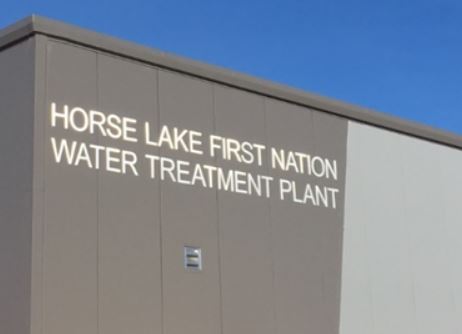
Investment in Action: Clean and Reliable Drinking Water for Horse Lake First Nation Residents in Alberta
Residents of Horse Lake First Nation in Alberta are enjoying clean, reliable drinking water thanks to a newly constructed water treatment plant that benefitted from nearly $10 million in federal funding. The previous facility was built in the 1980s and had limitations that included not being able to adequately treat source water contamination. The new plant not only has the ability to treat bacterial contamination, it also now supplies water that meets Canada's quality standards for drinking water.
Investment in Action: Reducing Boil Water Advisories in Ontario First Nation Communities
Residents of Weenusk First Nation, a remote community 770 kilometres northwest of Timmins, Ontario, now have access to clean, reliable drinking water after a boil-water advisory was lifted in 2018, 12 years after it was first put in place. Federal funding helped the community complete the necessary upgrades and repairs to its water treatment plant, develop an operational action plan, and train a certified water operator to oversee the plant.
Progress Made: Investing in More Safe Places to Call Home
Many Indigenous people live in unsafe, overcrowded houses. The Government of Canada is improving on-reserve housing conditions while engaging with First Nations and other partners to co-develop an effective long-term strategy.

At a Glance: Indigenous Homes Innovation Initiative
The Government of Canada is looking for ways to empower Indigenous communities to find new solutions, accelerate change, and build new partnerships to enhance community well-being and improve people's lives. The Indigenous Homes Innovation Initiative aims to find and support First Nations, Inuit, and Métis Nation innovators who have housing ideas for rural, urban, or remote Indigenous communities. Selected innovators will receive funding for both the development of their ideas and the implementation of their projects.
Housing for Métis
Through the Métis Nation Housing Sub-Accord, $500 million over 10 years in federal funding is supporting housing projects in Métis communities.
"The Métis Nation Housing Sub-Accord marks another important step on the path to forging a real nation-to-nation relationship with the federal government and addressing the pressing needs of our people for housing. It confirms the great value and effectiveness of the Permanent Bilateral Mechanism that the Prime Minister established with the Métis Nation and is achieving real change for our people."
– Clément Chartier
President of the Métis National Council
Progress Made: Providing More On-Reserve Schools for Indigenous Children
All children in Canada deserve a real and fair chance to reach their full potential, no matter where they live. First Nations and Inuit children have faced systemic barriers that have made it difficult for them to access the services they need. The Government of Canada is working with First Nations and Inuit partners to eliminate these barriers and give children in these communities the high-quality education, health services, and culturally relevant social supports they need to succeed.
By the Numbers
$1.47 billion committed for on-reserve schools that benefit 224 First Nations communities serving approximately 258,000 people, including:
- 73 new school projects: 58 in progress, 15 completed
- 85 renovations and upgrades of existing schools: 54 in progress, 31 completed
Data provided by Indigenous Services Canada
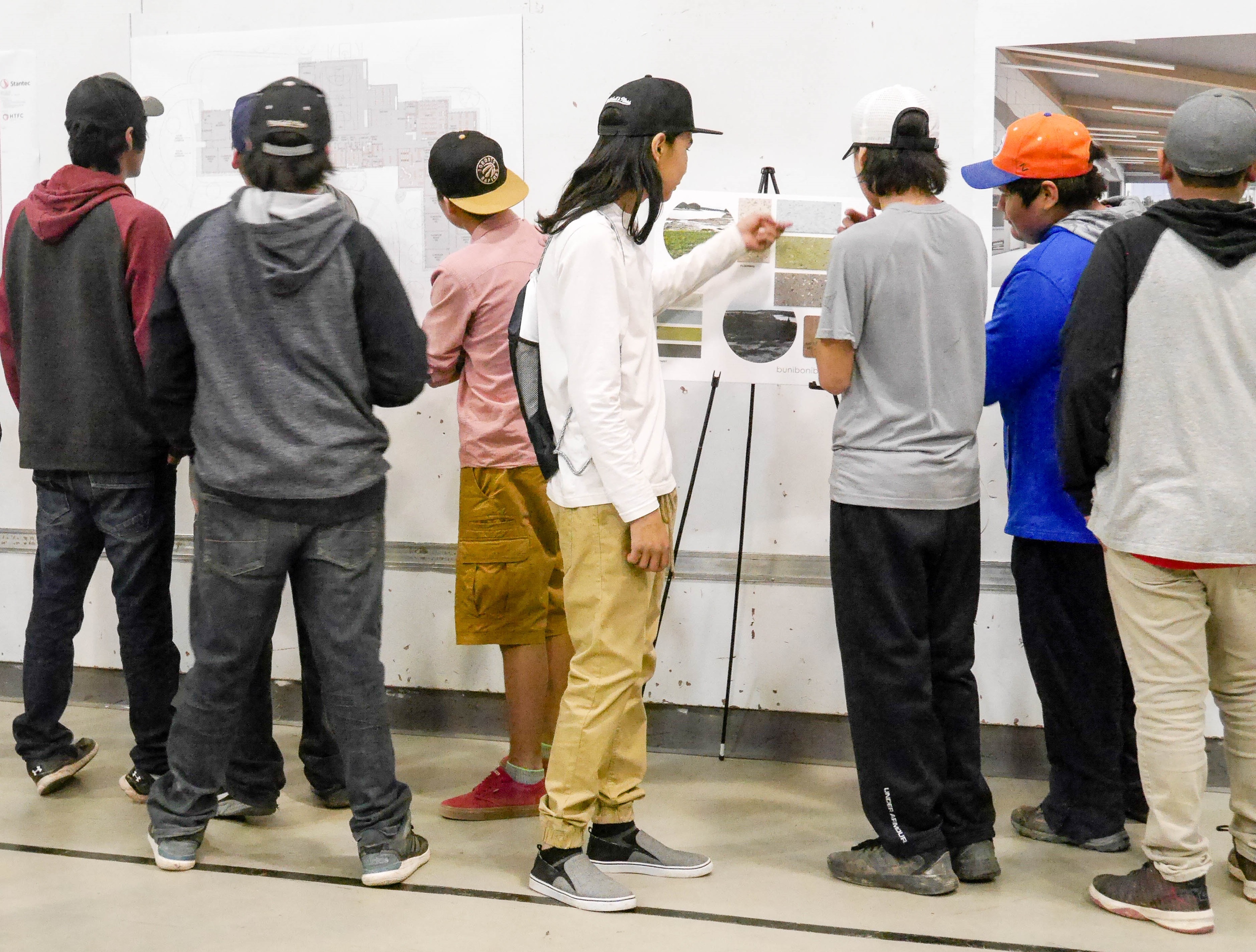
Investment in Action: New Schools for Northern Manitoba First Nations
More than 2,600 students in four Manitoba Indigenous communities will benefit from new schools, built in part with $248 million in federal funding. The Bunibonibee Cree Nation, God's Lake First Nation, Manto Sipi Cree Nation, and Wasagamack First Nation have signed one of the largest infrastructure contracts ever awarded by First Nations to build four new schools and renovate a fifth. This initiative uses a bundled approach, in which Indigenous communities and the private sector work in partnership with the Government of Canada. This approach enables Indigenous communities to take a lead role in designing their own schools, while a centralized approach to procurement and project management results in infrastructure being built more efficiently.
Progress Made: Providing Better Access to Health Services Close to Home
$1.5 billion is being invested to keep Indigenous families healthy, including:
- $1.4 billion to support sustained access to critical medical care and services; enhance the delivery of culturally appropriate problematic substance use treatment and prevention; and expand successful models of self-determination so that health programs and services are developed, delivered, and controlled by and for First Nations and Inuit.
- $109 million plus ongoing funding to respond to high rates of tuberculosis in Inuit communities. That includes developing a better understanding of the unique health needs of Inuit peoples through the creation of an Inuit Health Survey.
- $6 million to help the Métis Nation gather relevant data to develop a health strategy.
Progress Made: Investing in Cleaner, More Affordable Energy
Promoting the use of clean, reliable energy supports remote and northern Indigenous communities in transitioning to cleaner, healthier communities. The Arctic Energy Fund and Clean Energy for Rural and Remote Communities Program help communities reduce their dependence on fossil fuel for heat and electricity and transition to cleaner, more energy-efficient sources.
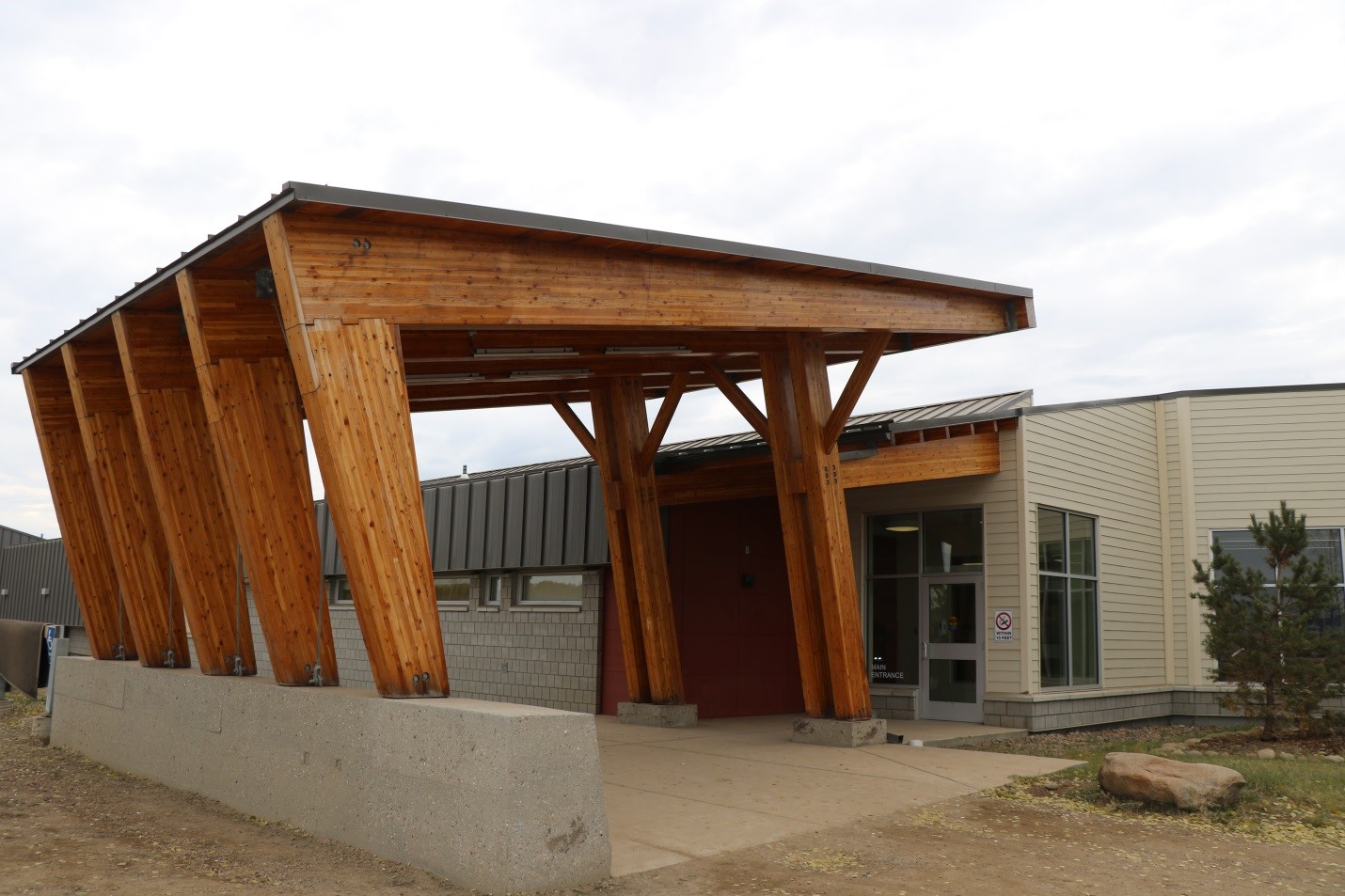
Investment in Action: New Primary Health Care for Northern Alberta Rural Communities
A new health facility at John D'Or Prairie in northern Alberta supports primary care services including: emergent and urgent services, primary care, public health, dentistry, and other programs. The John D'Or Prairie Health Centre provides services to approximately 200 of the 5,500 members of the Little Red River Cree Nation. In addition to John D'Or Prairie, Little Red River Cree Nation also includes the communities of Fox Lake and Garden River. The Government of Canada invested $17.3 million in this project.
Measuring Impact Over the Long Term
The Government of Canada, which has made significant enhancements to support evidence-based decision making, continues to develop and refine new ways to assess the benefits of infrastructure investments on the economic and social well-being of Canadians.
Robust and reliable data on the stock, age, physical condition, and performance of core public infrastructure assets can help all orders of government manage and maintain their existing infrastructure assets, while planning for new ones. Having the required data – as well as the knowledge and research capacity to turn that data into useful insights – will support the transition to a more evidence-based and results-oriented approach to infrastructure stewardship and investment.
Before 2016, limited national data were available on public infrastructure assets in Canada. That changed in 2017, when the Government of Canada launchedCanada's Core Public Infrastructure(CCPI) survey. This survey, based on data collected for reference year 2016, provided the first-ever snapshot of the stock, condition and performance of public infrastructure across the country.

The State of Public Infrastructure: Where Canada Stood in 2016
In 2016, approximately half of all public transit assets were in good or very good condition, according to municipalities. However, the condition varied greatly by asset type as well as by province and territory. Nationally, Canada had 17,852 buses. Of those buses, two-thirds were diesel, nearly one in five were bio-diesel, and one in 10 were hybrid.
In 2016, more than one in three owners of the country's potable-water systems issued drinking water advisories. Of those asset owners, half issued between two and five advisories, and one-quarter issued more than that. In addition, one in 20 asset owners indicated that they had issued at least one drinking water advisory in 2016 that lasted longer than 15 days. More than one-quarter of all asset owners reported that their wastewater systems needed to be upgraded to meet the quality standards of federal regulations on wastewater effluent.
Between 2012 and 2015, public investment in water and wastewater assets was reduced by half. Since then, the Government of Canada has moved to reverse this trend by providing funding for provinces, territories, municipalities, and Indigenous communities to renew their infrastructure so that both drinking water and wastewater meet legislated standards.
By 2017, nearly 100 percent of households in urban centres had access to high-speed internet with download speeds of 100 Mbps. However, in rural areas, only one in three households had access to the same download speed, leaving about three million Canadians without access to high-speed internet.
The majority of telecommunications investment in Canada, worth between $10 billion and $12 billion annually, is driven by the private sector. However, challenging geography and smaller populations present barriers to private-sector investment in building, operating, and maintaining the digital infrastructure needed for high-speed internet service to be extended to rural and remote communities.
In 2016, nearly two-thirds of all culture, recreation, and sports facilities were reported to be in good or very good condition, with arts and culture facilities in the best condition. Nearly three-quarters of all facilities were considered accessible to mobility challenged Canadians. Eight in 10 arts and culture facilities and three-quarters of multi-purpose facilities were reported to be accessible.
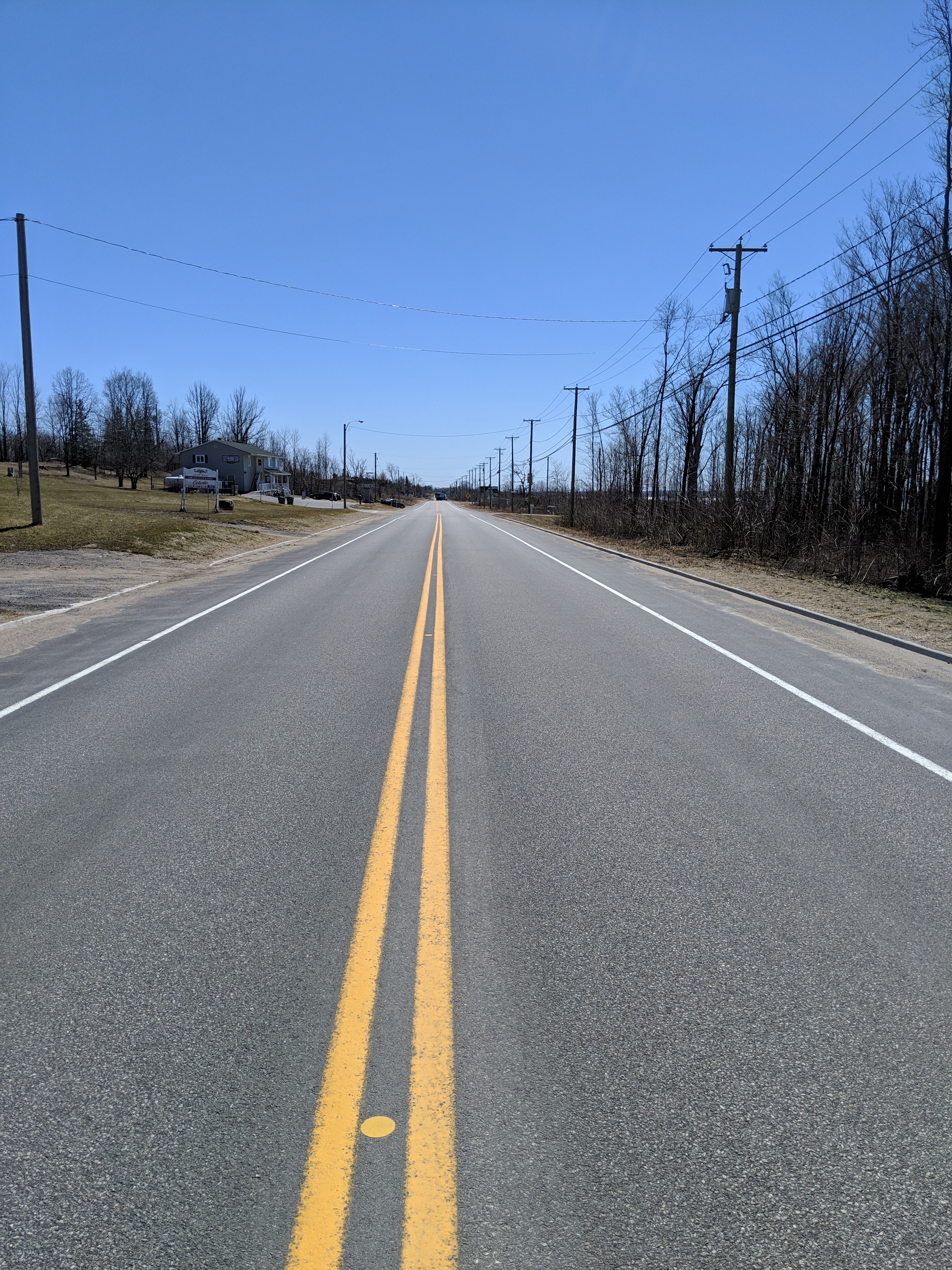
In 2016, nearly 80 percent of the nation's stock of social housing was built between 1970 and 1999. Meanwhile, nearly 1.7 million households were living either in conditions that didn't meet their basic needs, or in dwellings that were considered unsuitable, inadequate, or unaffordable.
Data from Canada's Core Public Infrastructure Survey
Data from the first version of this survey will serve as a baseline measure for future versions, which will enable comparative and trend analyses to be conducted. Data for the second round of the CCPI survey, which will cover the 2018 reference year, is scheduled to be collected in fall 2019. Infrastructure Canada is working with all orders of government to ensure that the survey provides the most complete and accurate picture about the state of the country's public infrastructure.
The CCPI was followed by the 2018 launch of the Infrastructure Economic Account (INFEA), which assesses the collective impact of infrastructure investments on Canada's economy, society, and environment. INFEA currently measures the impact of public and private infrastructure investment on economic activity, including the value added to the nation's gross domestic product and the number of jobs created. Early estimates derived from INFEA data suggest that over the next nine years, through new and existing federal programs, the Investing in Canada plan will support approximately 100,000 direct and indirect jobs annually.
Meanwhile, the Transportation Data and Information Hub has been developed to improve understanding of the transportation sector's role in Canada's economy and society. The Hub provides new performance measures for certain components of the national transportation system.
These data sources will be used to underpin Infrastructure Canada's various research activities, delivered through collaborations with partners such as other levels of government and stakeholders. These research activities will generate new insights that will strengthen knowledge and enable evidence-based decision-making about Canadian infrastructure.
These data sources are also being used to develop performance indicators that, in future years, will enable the Government of Canada to more precisely demonstrate the long-term impact of the Investing in Canada plan on the lives of Canadians.
Annex A: Investing in Canada Plan Implementation Status
Notes
- The 'number of projects' fields include traditional "bricks and mortar" type projects, services, housing units, lot servicing, capacity development, asset management, innovation projects, number of First Nations who benefitted from the investment, and educational and information training sessions.
- Not all programs are project-based and therefore data has not been reported in the table.
- Some programs receive funding from multiple sources and therefore the value of approved projects may exceed the total program allocation sourced from the Investing in Canada plan.
- The number of projects started is an estimate based on the information received in the project proposals received from proponents.
Department |
Program Name |
Allocation |
Number of projects approved |
Value of projects approved |
Number of projects started |
Budget Year |
|---|---|---|---|---|---|---|
Infrastructure Canada |
Public Transit Infrastructure Fund |
$3,400,000,000 |
1,204 |
$3,184,640,425 |
1,180 |
2016 |
Infrastructure Canada |
Investing in Canada Infrastructure Plan |
$20,096,000,000 |
12 |
$3,606,714,076 |
6 |
2017 |
Infrastructure Canada |
Canada Infrastructure Bank |
$5,000,000,000 |
1 |
$1,280,000,000 |
1 |
2017 |
TOTAL |
N/A |
$28,496,000,000 |
1,217 |
$8,071,354,501 |
1,187 |
N/A |
Department |
Program Name |
Allocation |
Number of projects approved |
Value of projects approved |
Number of projects started |
Budget Year |
|---|---|---|---|---|---|---|
Crown-Indigenous Relations and Northern Affairs |
Climate Change Preparedness in the North Program - Implementation of Adaptation Actions in the North |
$56,000,000 |
135 |
$19,317,463 |
135 |
2017 |
Crown-Indigenous Relations and Northern Affairs |
First Nation Adapt Program - Flood Plain Mapping |
$27,000,000 |
108 |
$18,038,861 |
108 |
2017 |
Crown-Indigenous Relations and Northern Affairs |
First Nations Waste Management Initiative |
$408,900,000 |
642 |
$94,937,587 |
642 |
2016 |
Crown-Indigenous Relations and Northern Affairs |
Indigenous Community Based Climate Monitoring |
$73,000,000 |
101 |
$9,152,677 |
101 |
2017 |
Environment and Climate Change Canada |
Canadian Centre for Climate Services |
$107,900,000 |
N/A |
$3,812,062 |
N/A |
2017 |
Environment and Climate Change Canada |
Green Municipal FundFootnote 7 |
$62,500,000 |
N/A |
N/A |
N/A |
2016 |
Indigenous Services Canada |
Improving Indigenous Communities (Budget 2017) |
$2,000,000,000 |
N/A |
N/A |
N/A |
2017 |
Indigenous Services Canada |
Water & Wastewater |
$1,833,000,000 |
505 |
$2,188,157,083 |
505 |
2016 |
Infrastructure Canada |
Canada Infrastructure Bank |
$5,000,000,000 |
N/A |
N/A |
N/A |
2017 |
Infrastructure Canada |
Clean Water and Wastewater Fund |
$2,000,000,000 |
2,393 |
$1,918,521,354 |
2,375 |
2016 |
Infrastructure Canada |
Codes, Guides and Specifications for Climate-Resilient Public Infrastructure |
$40,000,000 |
1 |
$42,500,000 |
1 |
2016 |
Infrastructure Canada |
Disaster Mitigation and Adaptation Fund |
$2,000,000,000 |
18 |
$792,655,295 |
4 |
2017 |
Infrastructure Canada |
Federation of Canadian Municipalities - Municipal Asset Management Program |
$50,000,000 |
200 |
$10,693,946 |
200 |
2016 |
Infrastructure Canada |
Federation of Canadian Municipalities - Municipalities for Climate Innovation Program |
$75,000,000 |
92 |
$14,680,300 |
92 |
2016 |
Infrastructure Canada |
Investing in Canada Infrastructure Plan |
$9,704,000,000 |
5 |
$726,208,821 |
2 |
2017 |
Infrastructure Canada |
New Building Canada Fund - National and Regional ProjectsFootnote 8 |
$212,300,000 |
1 |
$212,300,000 |
N/A |
2016 |
Innovation, Science, and Economic Development Canada |
Innovation Superclusters Initiative |
$75,000,000 |
N/A |
N/A |
N/A |
2017 |
Natural Resources Canada |
Building Regional Adaptation Capacity and Expertise |
$16,000,000 |
2 |
$517,015 |
2 |
2017 |
Natural Resources Canada |
Clean Energy for Rural and Remote Communities |
$220,000,000 |
1 |
$686,255 |
1 |
2017 |
Natural Resources Canada |
Electric Vehicle and Alternative Fuel Infrastructure Deployment and Technology Demonstration |
$62,500,000 |
39 |
$38,046,270 |
39 |
2016 |
Natural Resources Canada |
Electric Vehicles and Alternative Fuels Infrastructure |
$120,000,000 |
8 |
$2,292,415 |
8 |
2017 |
Natural Resources Canada |
Emerging Renewable Power |
$200,000,000 |
2 |
$55,402,500 |
2 |
2017 |
Natural Resources Canada |
Energy Efficient Buildings |
$182,000,000 |
4 |
$332,395 |
4 |
2017 |
Natural Resources Canada |
Green Municipal FundFootnote 9 |
$62,500,000 |
191 |
$142,006,333 |
N/A |
2016 |
Natural Resources Canada |
National-Scale Knowledge Synthesis and Disseminations |
$2,000,000 |
10 |
$721,400 |
10 |
2017 |
Natural Resources Canada |
Regional Electricity Cooperation and Strategic Infrastructure |
$2,500,000 |
N/A |
$940,000 |
N/A |
2016 |
Natural Resources Canada |
Smart Grids |
$100,000,000 |
3 |
$16,853,000 |
3 |
2017 |
Multiple Departments |
Reserved Green FundingFootnote 10 |
$2,000,000,000 |
1 |
$760,000,000 |
|
2017 |
TOTAL |
N/A |
$26,692,100,000 |
4,462 |
$7,068,773,032 |
4,234 |
N/A |
Department |
Program Name |
Allocation |
Number of projects approved |
Value of projects approved |
Number of projects started |
Budget Year |
|---|---|---|---|---|---|---|
Canada Mortgage and Housing Corporation |
Aboriginal Capacity and Skills Development |
$10,000,000 |
464 |
$10,000,000 |
464 |
2016 |
Canada Mortgage and Housing Corporation |
FPT Housing Partnership Framework |
$7,740,000,000 |
N/A |
N/A |
N/A |
2017 |
Canada Mortgage and Housing Corporation |
Increasing Affordable Housing for Seniors |
$200,700,000 |
1,679 |
$200,100,001 |
1,679 |
2016 |
Canada Mortgage and Housing Corporation |
Investment in Affordable Housing |
$504,400,000 |
5,231 |
$501,600,000 |
5,230 |
2016 |
Canada Mortgage and Housing Corporation |
National Housing Co-Investment Fund |
$5,134,000,000 |
N/A |
N/A |
N/A |
2017 |
Canada Mortgage and Housing Corporation |
Northern Housing |
$97,700,000 |
98 |
$96,700,000 |
98 |
2016 |
Canada Mortgage and Housing Corporation |
Other National Housing Strategy Initiatives |
$1,097,000,000 |
490 |
$8,747,522 |
490 |
2017 |
Canada Mortgage and Housing Corporation |
Renovation and Retrofit of Social Housing |
$574,000,000 |
2,577 |
$575,762,664 |
2,577 |
2016 |
Canada Mortgage and Housing Corporation |
Renovation and Retrofit on Reserve |
$127,700,000 |
3,137 |
$119,961,660 |
3,137 |
2016 |
Canada Mortgage and Housing Corporation |
Shelters for First Nations Victims of Family Violence |
$10,400,000 |
5 |
$10,400,000 |
5 |
2016 |
Canada Mortgage and Housing Corporation |
Supporting Shelters for Victims of Family Violence |
$89,900,000 |
3,228 |
$89,899,999 |
3,193 |
2016 |
Canadian Heritage |
Canada Cultural Spaces Fund (Budget 2016)Footnote 11 |
$168,200,000 |
N/A |
N/A |
N/A |
2016 |
Canadian Heritage |
Canada Cultural Spaces Fund (Budget 2017)Footnote 12 |
$300,000,000 |
714 |
$350,040,403 |
290 |
2017 |
Canadian Heritage |
Community Educational Infrastructure |
$80,000,000 |
8 |
$5,741,046 |
7 |
2017 |
Crown-Indigenous Relations and Northern Affairs |
Inuit Housing |
$80,000,000 |
192 |
$80,000,000 |
192 |
2016 |
Employment and Social Development Canada |
Early Learning and Child Care (Budget 2016) |
$400,000,000 |
N/A |
N/A |
N/A |
2016 |
Employment and Social Development Canada |
Early Learning and Child Care (Budget 2017) |
$5,300,000,000 |
N/A |
N/A |
N/A |
2017 |
Employment and Social Development Canada |
Enabling Accessibility Fund (Budget 2017) |
$77,000,000 |
N/A |
N/A |
N/A |
2017 |
Employment and Social Development Canada |
Enabling Accessibility Fund (Budget 2016) |
$4,000,000 |
168 |
$3,999,659 |
168 |
2016 |
Employment and Social Development Canada |
First Nations and Inuit Child Care Initiative (Budget 2016) |
$62,800,000 |
549 |
$60,429,697 |
549 |
2016 |
Employment and Social Development Canada |
Homelessness Partnering Strategy |
$111,770,000 |
312 |
$105,122,357 |
312 |
2016 |
Employment and Social Development Canada |
Homelessness Partnering Strategy (Budget 2017) |
$2,129,000,000 |
126 |
$49,241,712 |
126 |
2017 |
Employment and Social Development Canada |
Indigenous Early Learning and Child Care Transformation Initiative (Budget 2017) |
$1,700,000,000 |
N/A |
N/A |
N/A |
2017 |
Employment and Social Development Canada |
Women in Construction Fund |
$10,000,000 |
N/A |
N/A |
N/A |
2017 |
Health Canada |
Home Care Infrastructure |
$1,000,000,000 |
N/A |
N/A |
N/A |
2017 |
Indigenous Services Canada |
Aboriginal Head Start on Reserve |
$51,200,000 |
167 |
$44,083,089 |
167 |
2016 |
Indigenous Services Canada |
Capital Facilities and Maintenance Program |
$15,000,000 |
N/A |
N/A |
N/A |
2017 |
Indigenous Services Canada |
First Nations Infrastructure Fund: Culture and Recreational Centers |
$76,900,000 |
210 |
$83,225,668 |
210 |
2016 |
Indigenous Services Canada |
Health Facilities |
$270,000,000 |
45 |
$207,098,143 |
45 |
2016 |
Indigenous Services Canada |
Housing for First Nations on reserve |
$416,600,000 |
7,527 |
$624,492,662 |
7,527 |
2016 |
Indigenous Services Canada |
Improving Indigenous Communities (Budget 2017) |
$2,000,000,000 |
421 |
$817,088,009 |
421 |
2017 |
Infrastructure Canada |
Investing in Canada Infrastructure Plan |
$1,345,000,000 |
4 |
$12,619,368 |
3 |
2017 |
Parks Canada Agency |
National Cost-Sharing Program for Heritage Places |
$20,000,000 |
132 |
$17,264,994 |
132 |
2016 |
Public Health Agency of Canada |
Aboriginal Head Start in Urban and Northern Communities |
$15,400,000 |
81 |
$15,400,000 |
77 |
2016 |
Regional Development Agencies |
Canada 150 Community Infrastructure Program |
$150,000,000 |
1,412 |
$176,980,292 |
1,362 |
2016 |
N/A |
Less funds in the fiscal framework and other revenues |
-$6,415,000,000 |
N/A |
N/A |
N/A |
2017 |
TOTAL |
N/A |
$24,953,670,000 |
28,977 |
$4,265,998,945 |
28,461 |
N/A |
Department |
Program Name |
Allocation |
Number of projects approved |
Value of projects approved |
Number of projects started |
Budget Year |
|---|---|---|---|---|---|---|
Environment and Climate Change Canada |
Heavy-Duty Vehicle and Off-Road RegulationsFootnote 13 |
$16,000,000 |
N/A |
N/A |
N/A |
2017 |
Infrastructure Canada |
Canada Infrastructure Bank |
$5,000,000,000 |
N/A |
N/A |
N/A |
2017 |
Transport Canada |
Climate Risk AssessmentsFootnote 14 |
$16,000,000 |
N/A |
N/A |
N/A |
2017 |
Transport Canada |
Connecting Communities by Rail and Water |
$1,924,000,000 |
69 |
$1,440,692,622 |
54 |
2017 |
Transport Canada |
Modernizing Transportation |
$77,000,000 |
15 |
$20,271,139 |
15 |
2017 |
Transport Canada |
National Trade Corridors Fund |
$2,000,000,000 |
39 |
$805,888,084 |
34 |
2017 |
Transport Canada |
Oceans Protection PlanFootnote 15 |
$1,327,000,000 |
50 |
$1,327,000,000 |
50 |
2017 |
Transport Canada |
Trade and Transportation Information System |
$50,000,000 |
5 |
$50,000,000 |
5 |
2017 |
TOTAL |
N/A |
$10,410,000,000 |
178 |
$3,643,851,845 |
145 |
N/A |
Department |
Program Name |
Allocation |
Number of projects approved |
Value of projects approved |
Number of projects started |
Budget Year |
|---|---|---|---|---|---|---|
Infrastructure Canada |
Investing in Canada Infrastructure Plan |
$2,410,000,000 |
7 |
$91,120,077 |
3 |
2017 |
Innovation, Science, and Economic Development Canada |
Connect to Innovate |
$500,000,000 |
174 |
$454,189,230 |
90 |
2016 |
TOTAL |
N/A |
$2,910,000,000 |
181 |
$545,309,307 |
93 |
N/A |
Department |
Program Name |
Allocation |
Number of projects approved |
Value of projects approved |
Number of projects started |
Budget Year |
|---|---|---|---|---|---|---|
Infrastructure Canada |
Research and Knowledge Initiative |
$25,000,000 |
N/A |
N/A |
N/A |
2017 |
Infrastructure Canada |
Smart Cities ChallengeFootnote 16 |
$300,000,000 |
21 |
$9,600,000 |
21 |
2017 |
Innovation, Science, and Economic Development Canada |
Post-Secondary Strategic Investment Fund |
$2,000,000,000 |
300 |
$1,962,323,352 |
298 |
2016 |
Innovation, Science, and Economic Development Canada |
Innovation Superclusters Initiative |
$75,000,000 |
N/A |
N/A |
N/A |
2017 |
TOTAL |
N/A |
$2,400,000,000 |
321 |
$1,971,923,352 |
319 |
N/A |
Department |
Program Name |
Allocation |
Number of projects approved |
Value of projects approved |
Number of projects started |
Budget Year |
|---|---|---|---|---|---|---|
Canada Mortgage and Housing Corporation |
Existing Housing Programs |
$17,262,000,000 |
N/A |
N/A |
N/A |
Existing Funding |
Canadian Heritage |
Canada Cultural Spaces FundFootnote 17 |
$360,000,000 |
N/A |
N/A |
N/A |
Existing Funding |
Employment and Social Development Canada |
Homelessness Partnering Strategy |
$357,000,000 |
N/A |
N/A |
N/A |
Existing Funding |
Indigenous Services Canada |
Multiple ProgramsFootnote 18 |
$16,157,000,000 |
N/A |
N/A |
N/A |
Existing Funding |
Infrastructure Canada |
Multiple ProgramsFootnote 19 |
$57,513,000,000 |
12,850 |
$16,727,527,196 |
N/A |
Existing Funding |
Regional Development Agencies |
Canada 150 Community Infrastructure Program |
$147,000,000 |
N/A |
N/A |
N/A |
Existing Funding |
Transport Canada |
Multiple ProgramsFootnote 20 |
$341,000,000 |
9 |
$13,284,707 |
|
Existing Funding |
TOTAL |
N/A |
$92,137,000,000 |
12,859 |
$16,740,811,903 |
N/A |
N/A |

Annex B: Want to Learn More about the Investing in Canada Plan?
Since 2016, the Government of Canada has taken unprecedented steps to publicly report on infrastructure investments made under the Investing in Canada plan. Canadians can find regularly updated information on the Plan on Infrastructure Canada's website, which contains a geo-map that shows Canadians the investments being made in their community. In addition, a searchable database enables Canadians to find the number and value of projects approved to date.
Footnotes
- Footnote 1
-
Department of Finance Canada (2019). Investing in the Middle Class: Budget 2019. Ottawa, p.74-79.
- Footnote 2
-
Department of Finance Canada (2019). Investing in the Middle Class: Budget 2019. Ottawa, p.74-79.
- Footnote 3
-
The average life expectancy of non-indigenous populations is 82.9 years. The average life expectancy for indigenous populations is: 72.4 years for Inui populations; 77.9 years for First Nations populations, on and off reserve; and 79 years for Métis populations.
- Footnote 4
-
https://infobase.phac-aspc.gc.ca/fnih-spni/ 2006 Birth-Census Cohort Database, Statistics Canada
- Footnote 5
-
Aboriginal peoples in Canada: Key results from the 2016 Census (https://www150.statcan.gc.ca/n1/daily-quotidien/171025/dq171025a-eng.htm?indid=14430-1&indgeo=0#data)
- Footnote 6
-
The Canadian Council for Public-Private Partnerships: P3's: Bridging the First Nations Infrastructure Gap, 2016 http://www.pppcouncil.ca/web/P3_Knowledge_Centre/Research/P3_s__Bridging_the_First_Nations_Infrastructure_Gap. aspx?WebsiteKey=712ad751-6689-4d4a-aa17-e9f993740a89
- Footnote 7
-
The Green Municipal Fund is delivered by the Federation of Canadian Municipalities on behalf of Environment and Climate Change Canada, and Natural Resources Canada. Data are reported in aggregate against Natural Resources Canada allocation.
- Footnote 8
-
The New Building Canada Fund is one of Infrastructure Canada’s existing programs. The funding reported here is for a single project announced in Budget 2016 as part of the Investing in Canada plan.
- Footnote 9
-
The Green Municipal Fund is delivered by the Federation of Canadian Municipalities on behalf of Environment and Climate Change Canada, and Natural Resources Canada. Data are reported in aggregate against Natural Resources Canada allocation.
- Footnote 10
-
This funding has been divided between 6 initiatives: Funding to support the Northern Grid project, Infrastructure Support for Coal Dependent Communities, Investment in Yukon College, Electric Vehicle and Alternative Fuel Infrastructure, Home Energy Retrofits and Asset Management, and a top-up to the National Trade Corridors Fund.
- Footnote 11
-
Data for the Canada Cultural Spaces Fund are reported in aggregate against the Budget 2017 allocation.
- Footnote 12
-
Data for the Canada Cultural Spaces Fund are reported in aggregate against the Budget 2017 allocation.
- Footnote 13
-
Transport Canada’s initiative under the Heavy-Duty Vehicle Off-Road Regulations horizontal initiative is the $3.09M Heavy-Duty Vehicle Retrofit Requirements Initiative, which is well underway. Transport Canada’s Heavy-Duty Vehicle Retrofit Requirements Initiative is fully reported on under the Horizontal Management Framework for Clean Growth and Climate Change: Mitigation and Adaptation supplementary table (led by Environment and Climate Change Canada).
- Footnote 14
-
This funding represents the Transportation Assets Risk Assessment initiative, which does not involve capital investments, and is fully reported on under the Horizontal Management Framework for Clean Growth and Climate Change: Mitigation and Adaptation supplementary table (led by Environment and Climate Change Canada). As of May 2019, $3.7M has been committed under this initiative.
- Footnote 15
-
Reporting on the Oceans Protection Plan is presented at an initiative level.
- Footnote 16
-
The Smart Cities Challenge funding is announced in two phases: 1) finalist grants, and 2) contributions for winners. The data represented here is for the finalist grants and the Community Support Program. Challenge winners will be announced on May 14, 2019.
- Footnote 17
-
Data for the Canada Cultural Spaces Fund are reported in aggregate against the Budget 2017 allocation.
- Footnote 18
-
This includes 6 initiatives such as Indigenous Early Learning and Childcare, Social Community Infrastructure and Support for Education Facilities.
- Footnote 19
-
This includes 9 initiatives such as the New Building Canada Fund, GST Rebate and the Gas Tax Fund.
- Footnote 20
-
This includes the Asia-Pacific Gateway and Corridor Initiative and the Gateways and Border Crossings Fund.
- Date modified:
